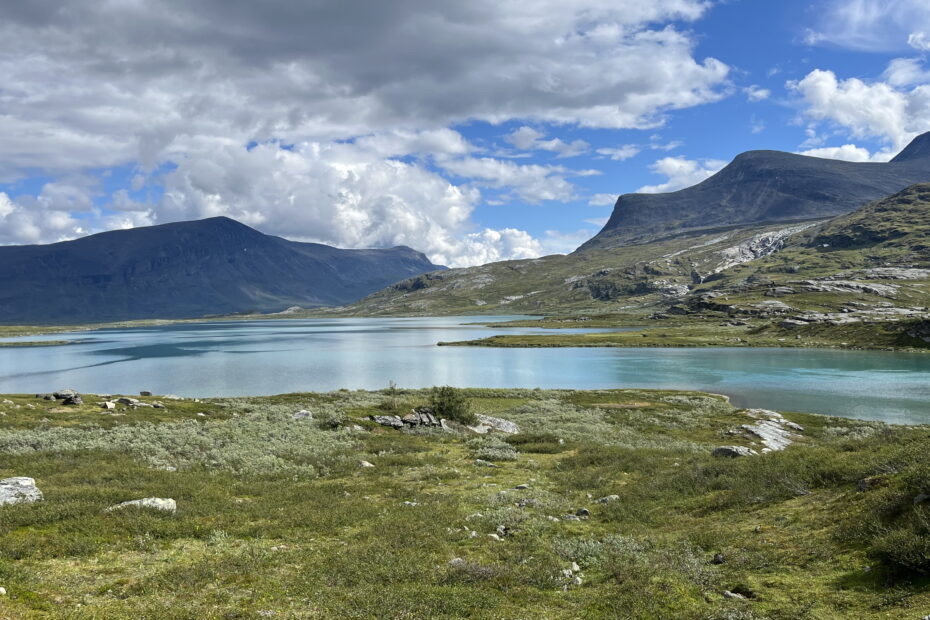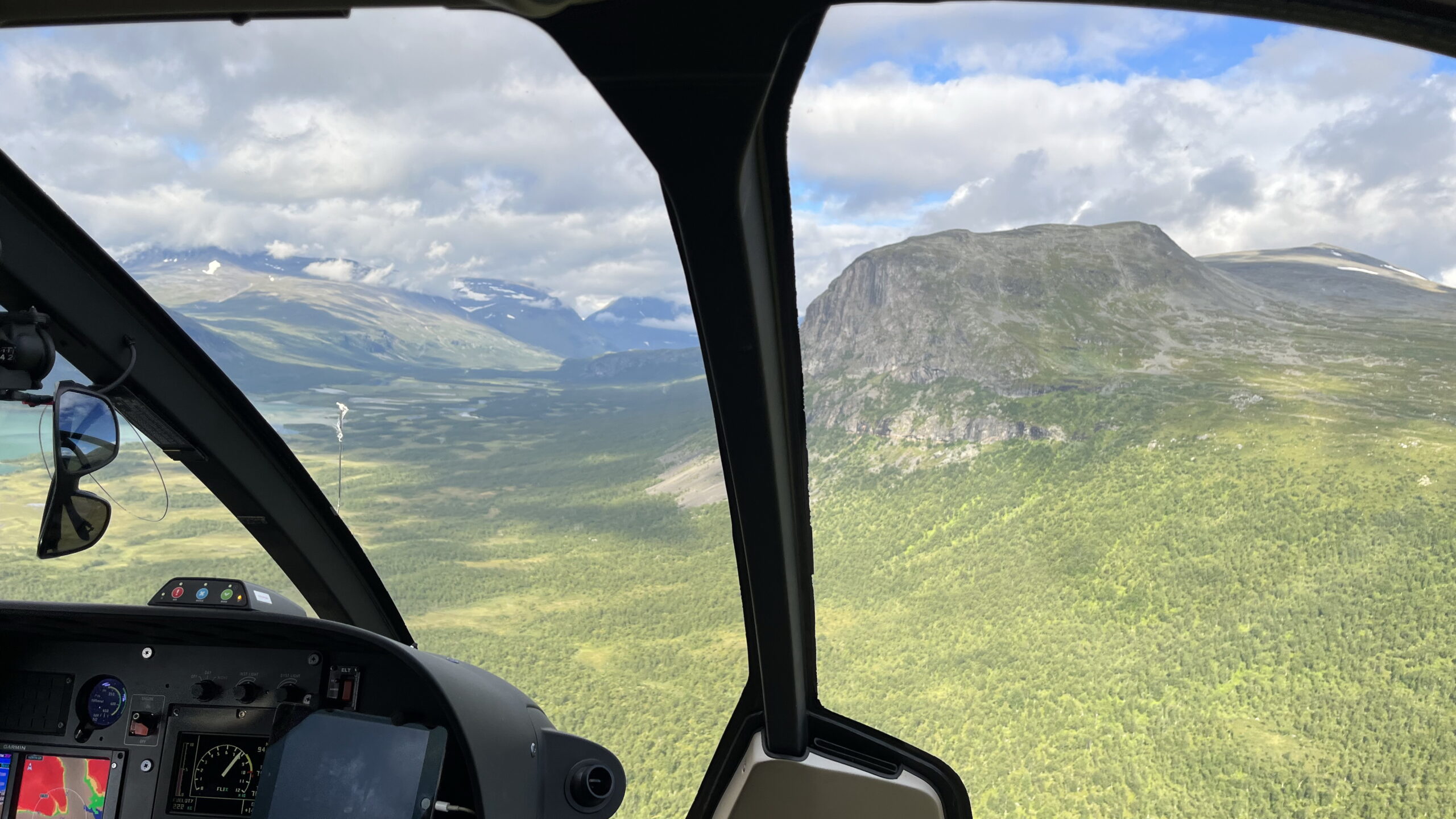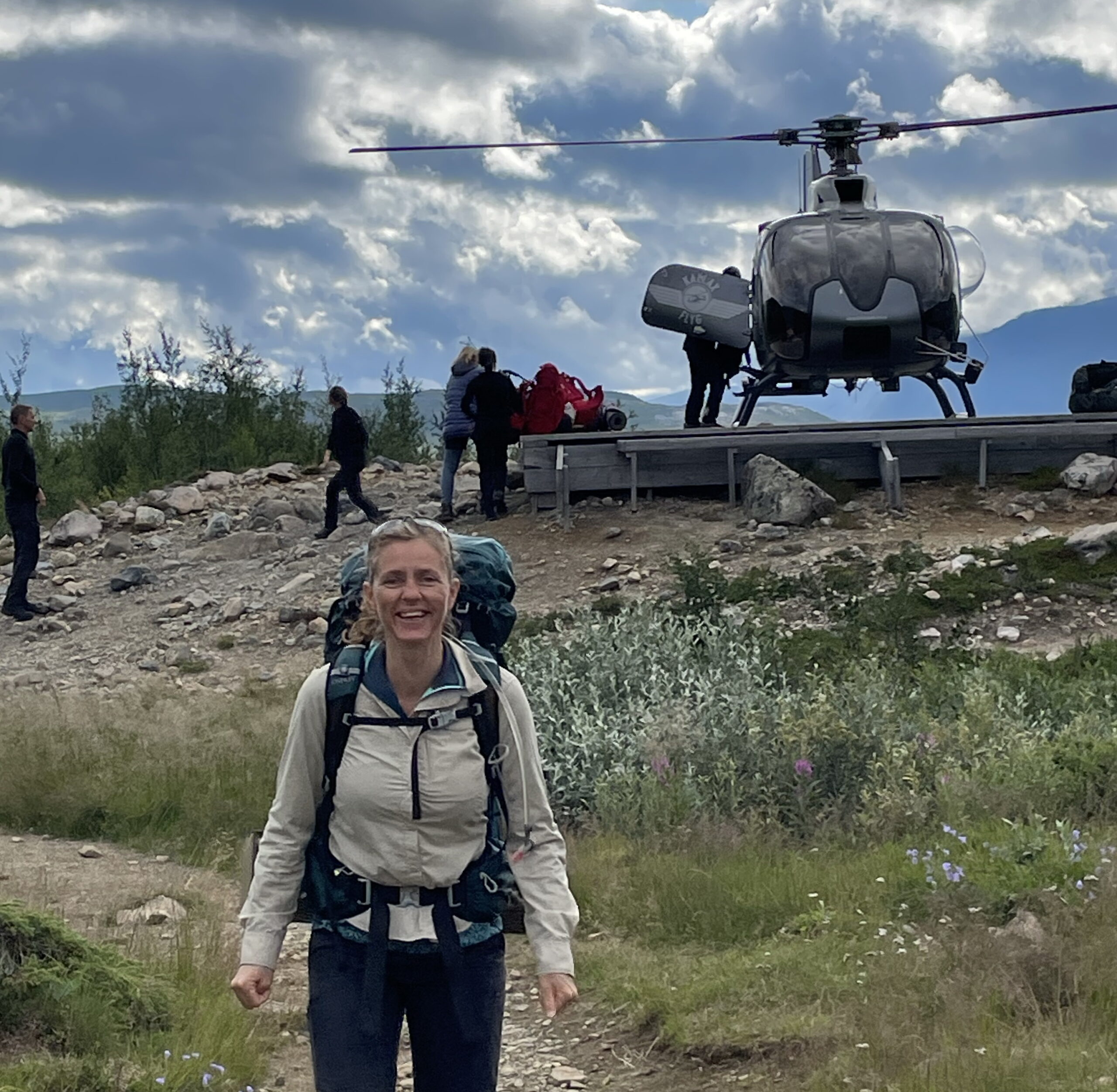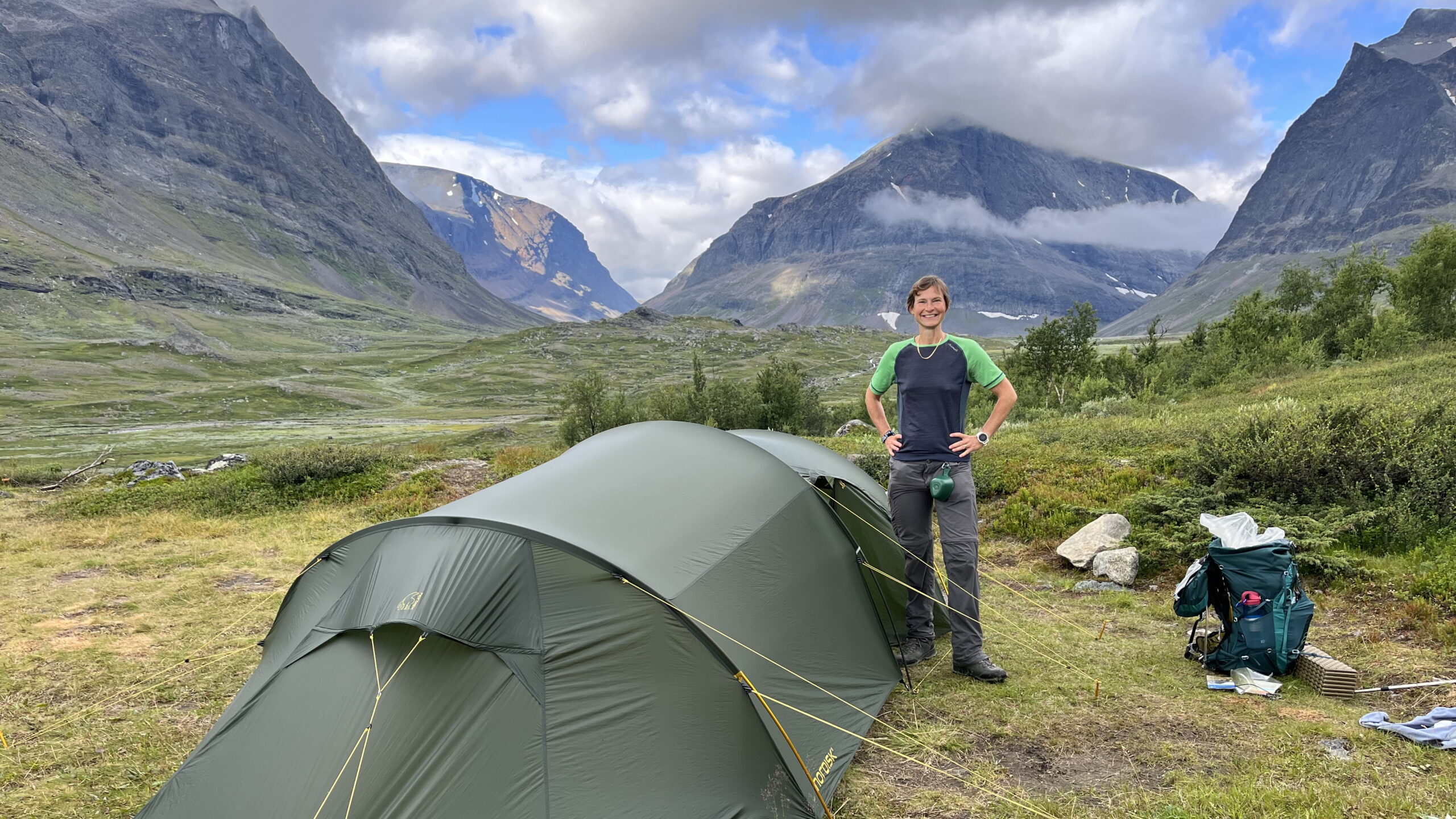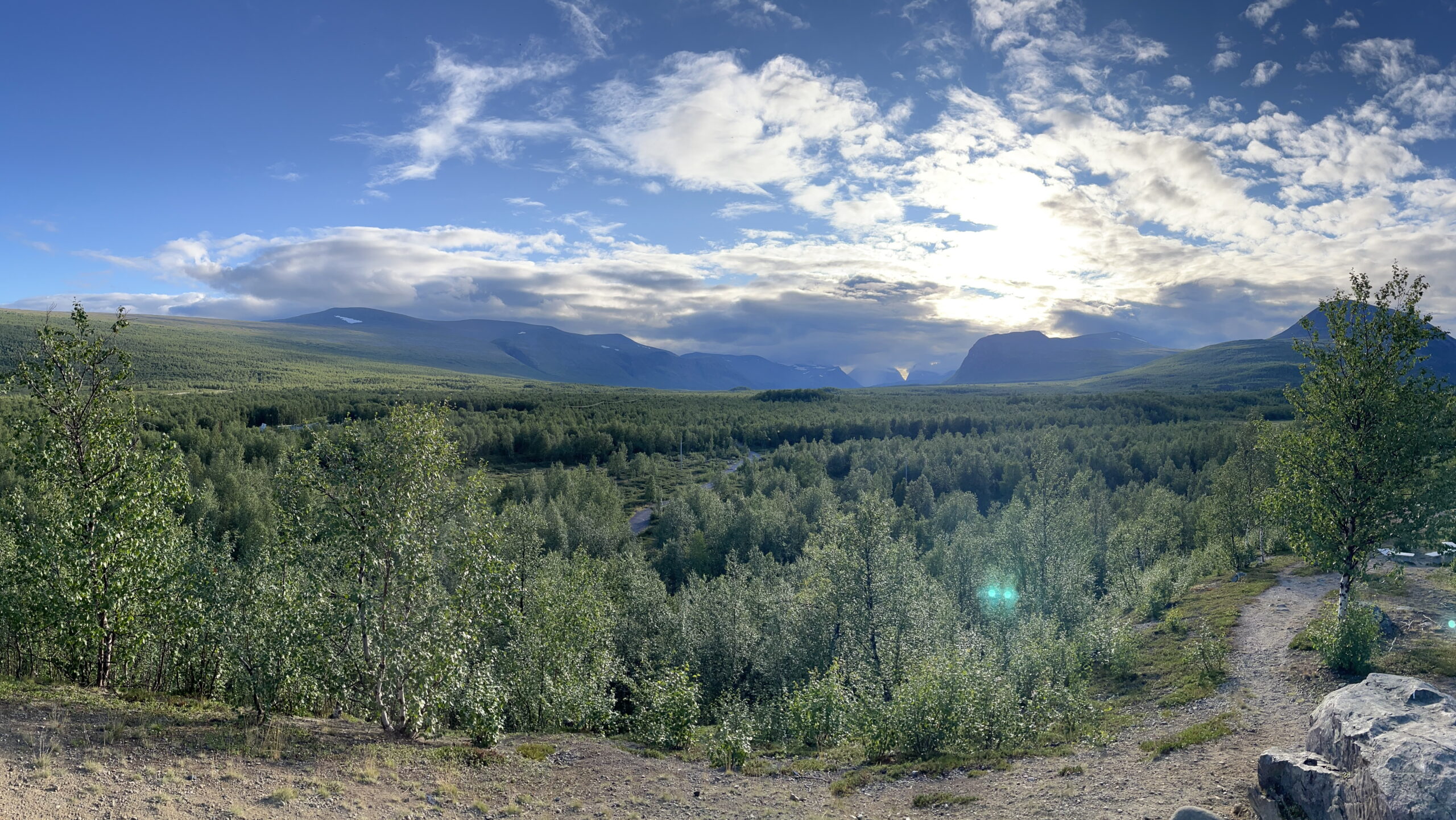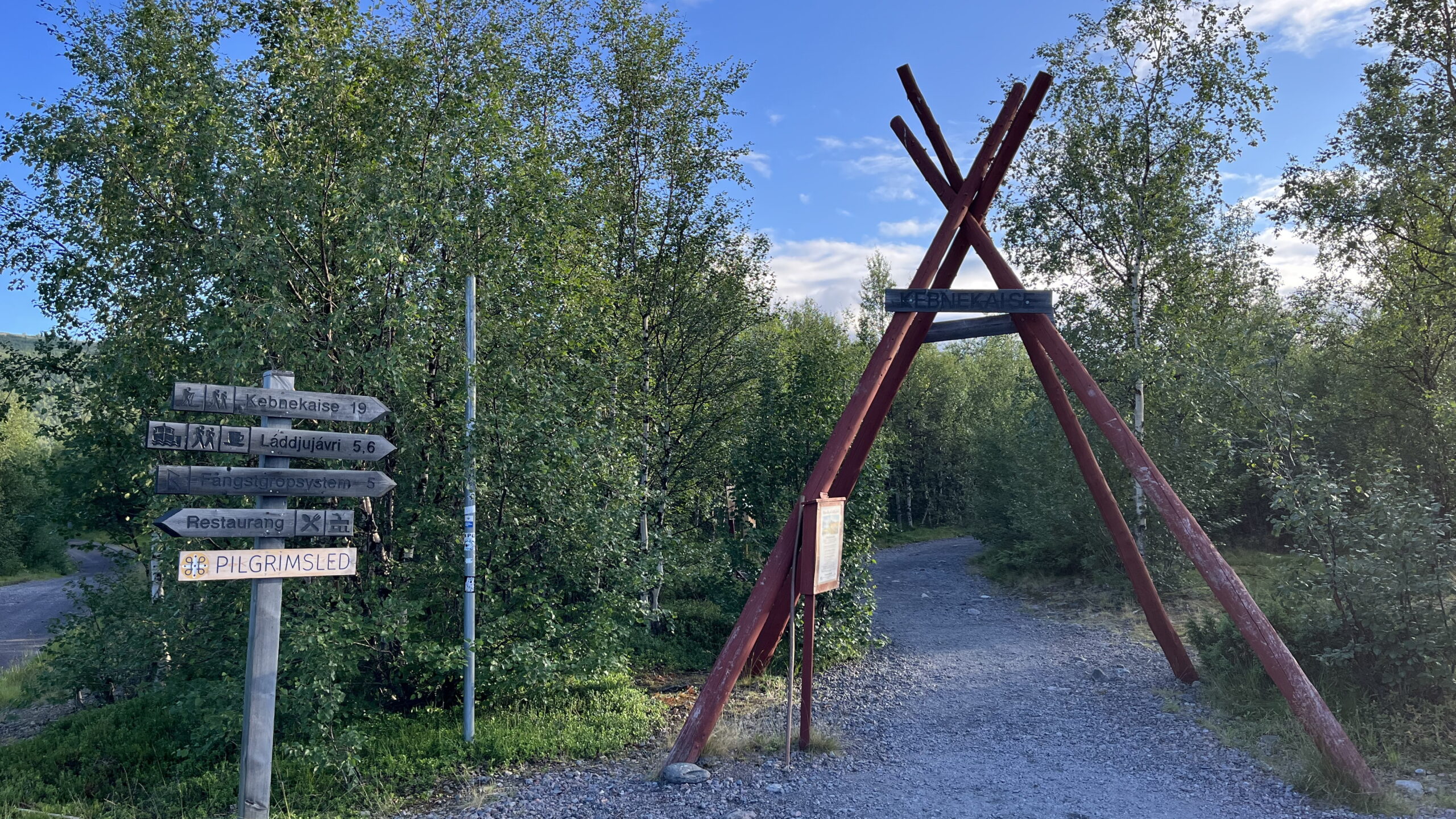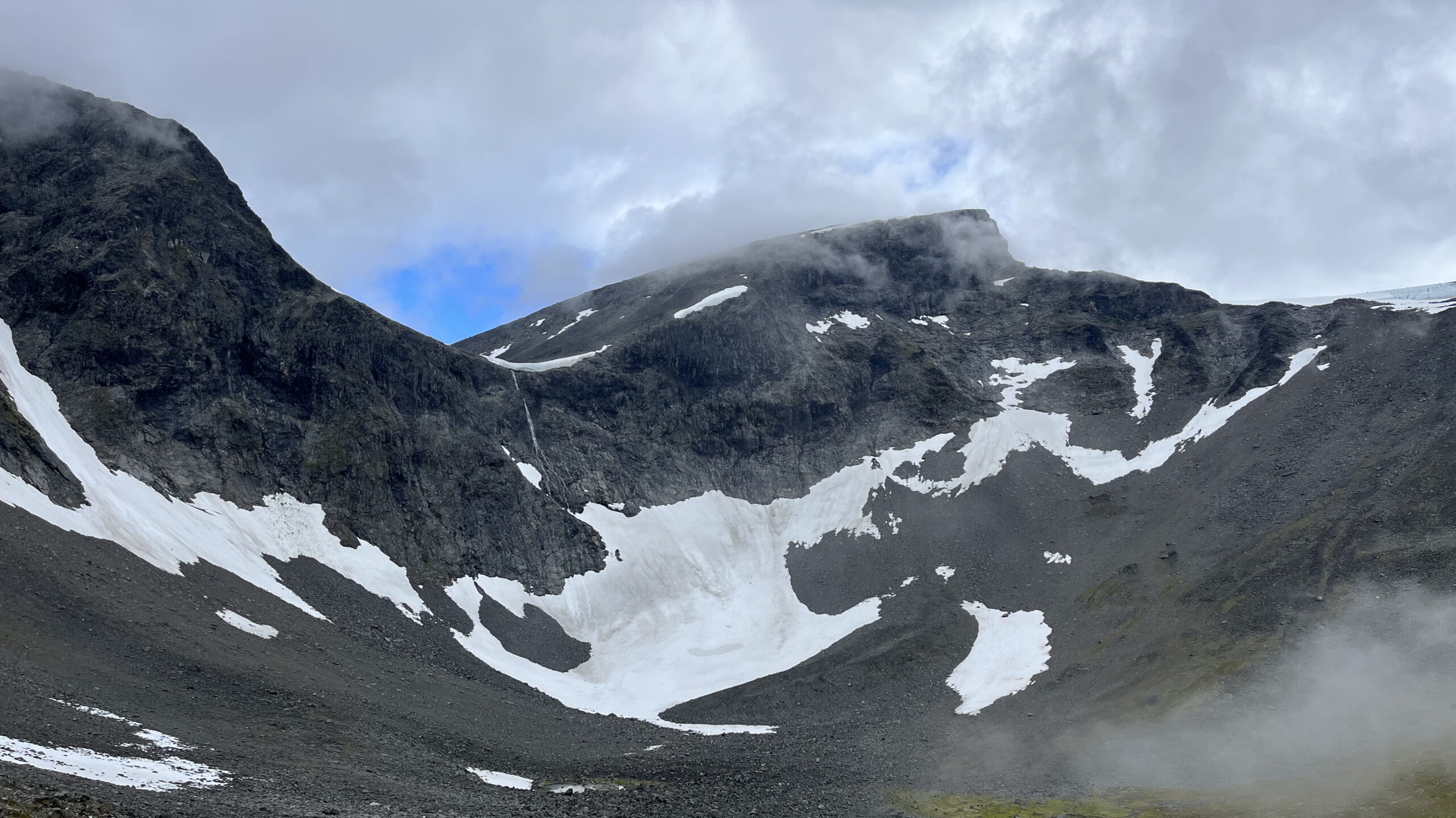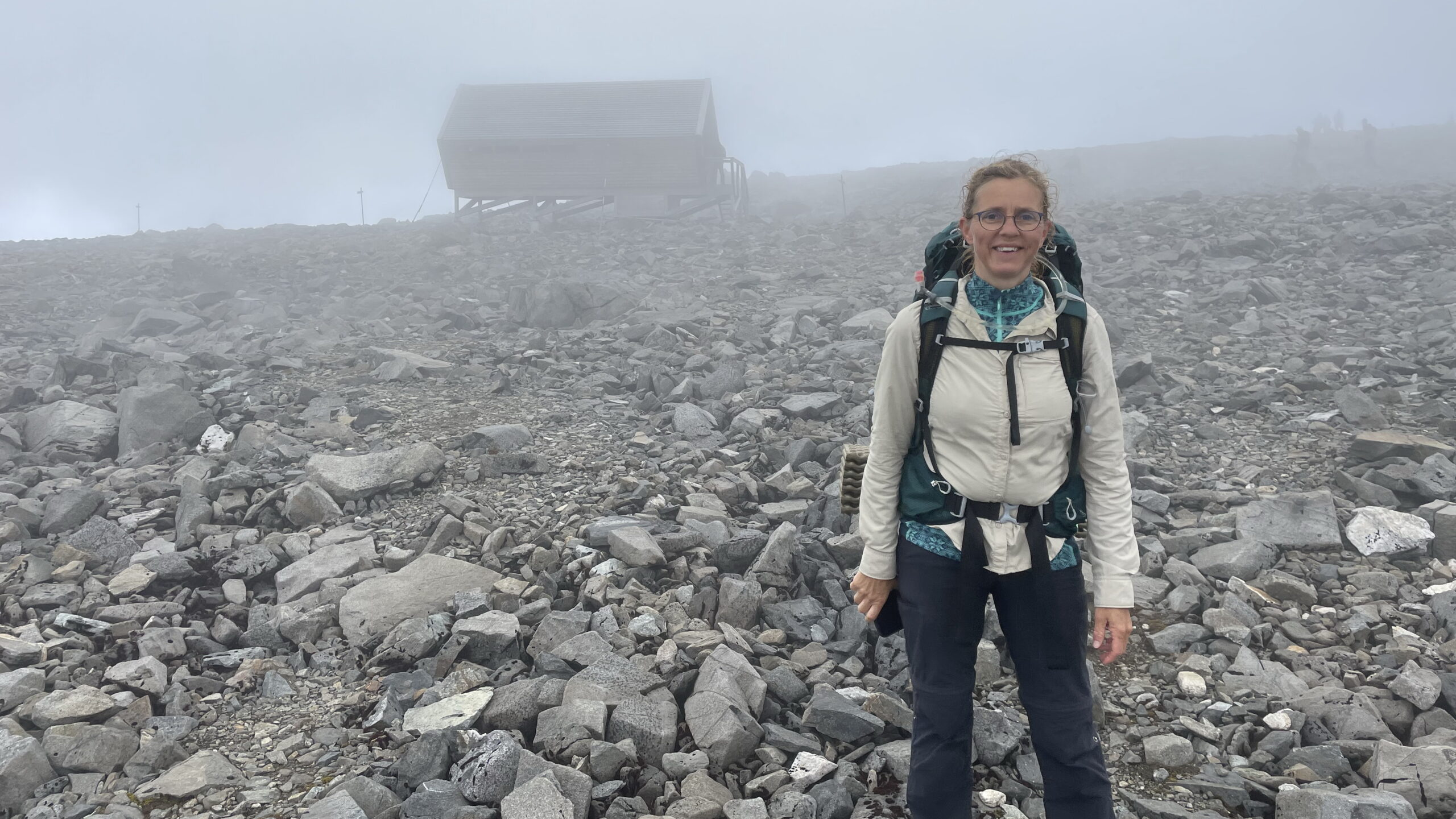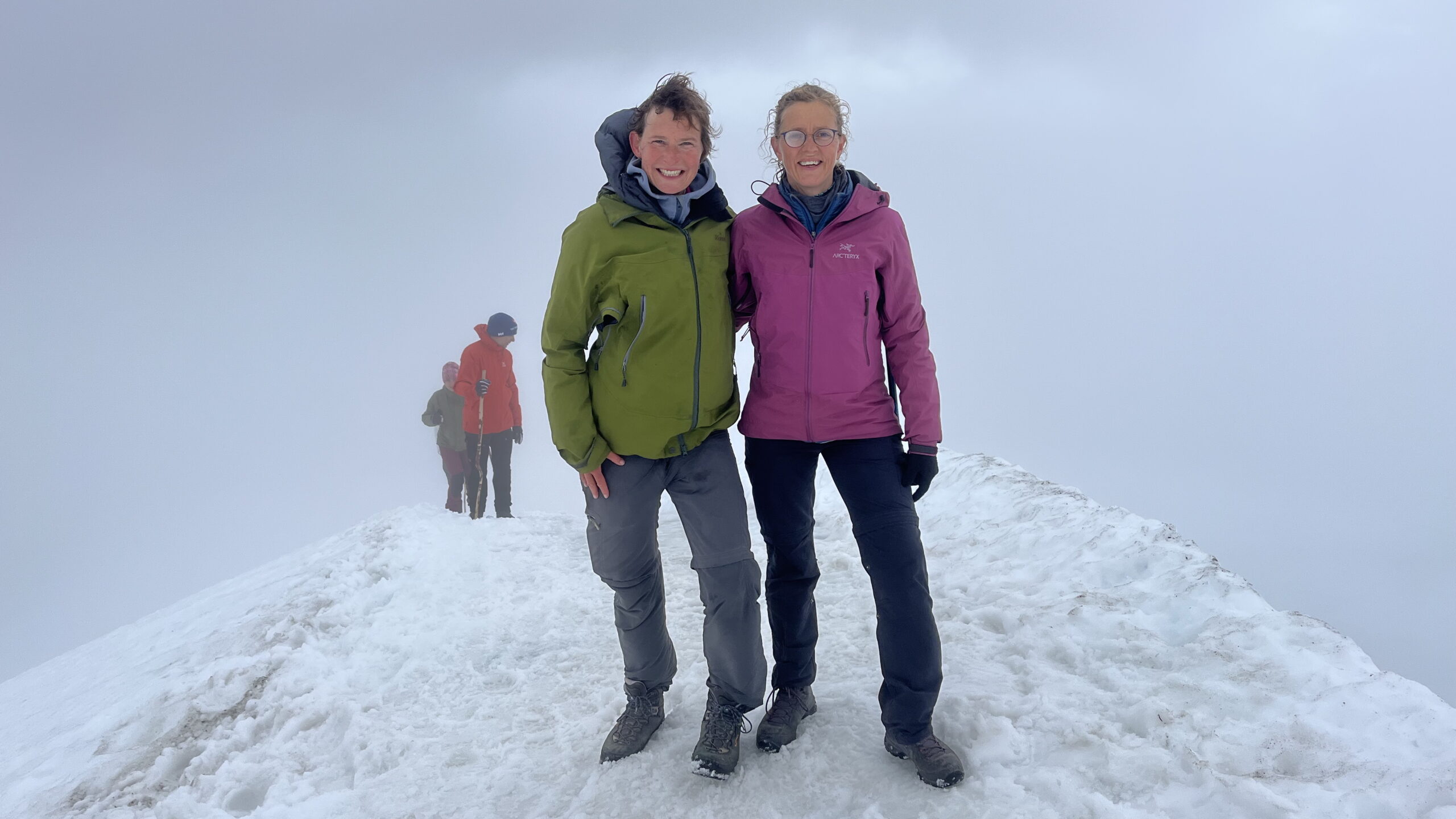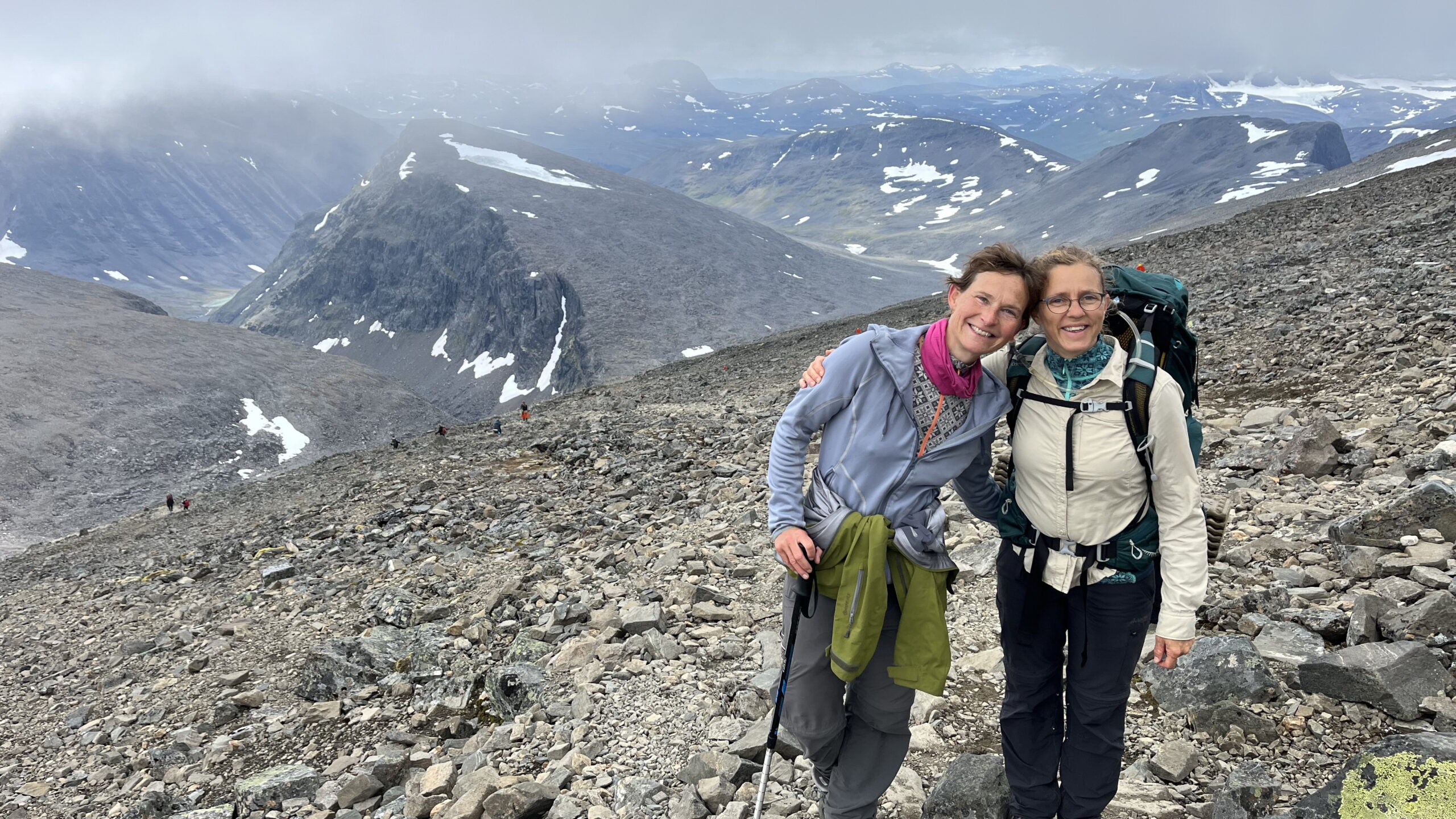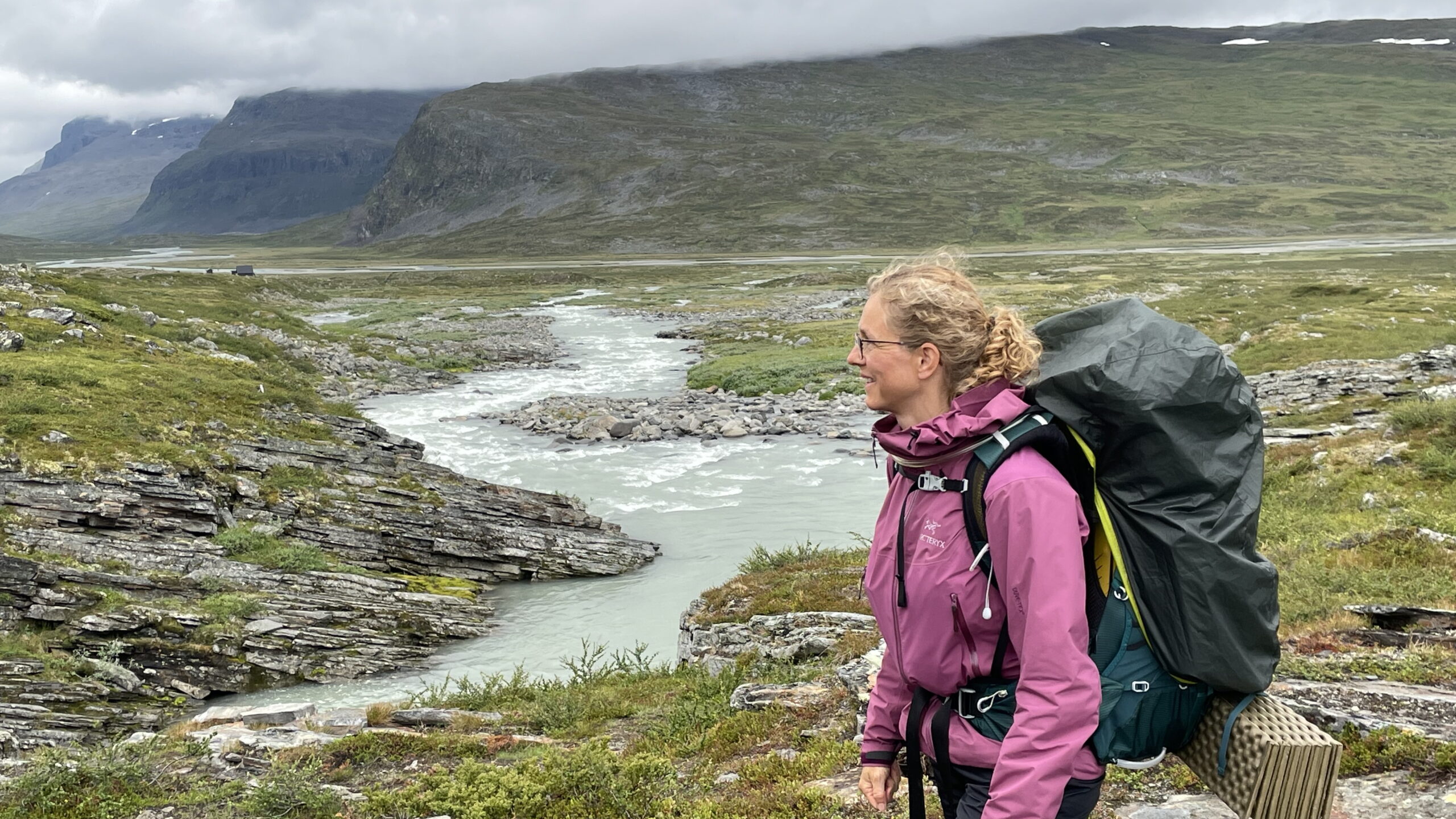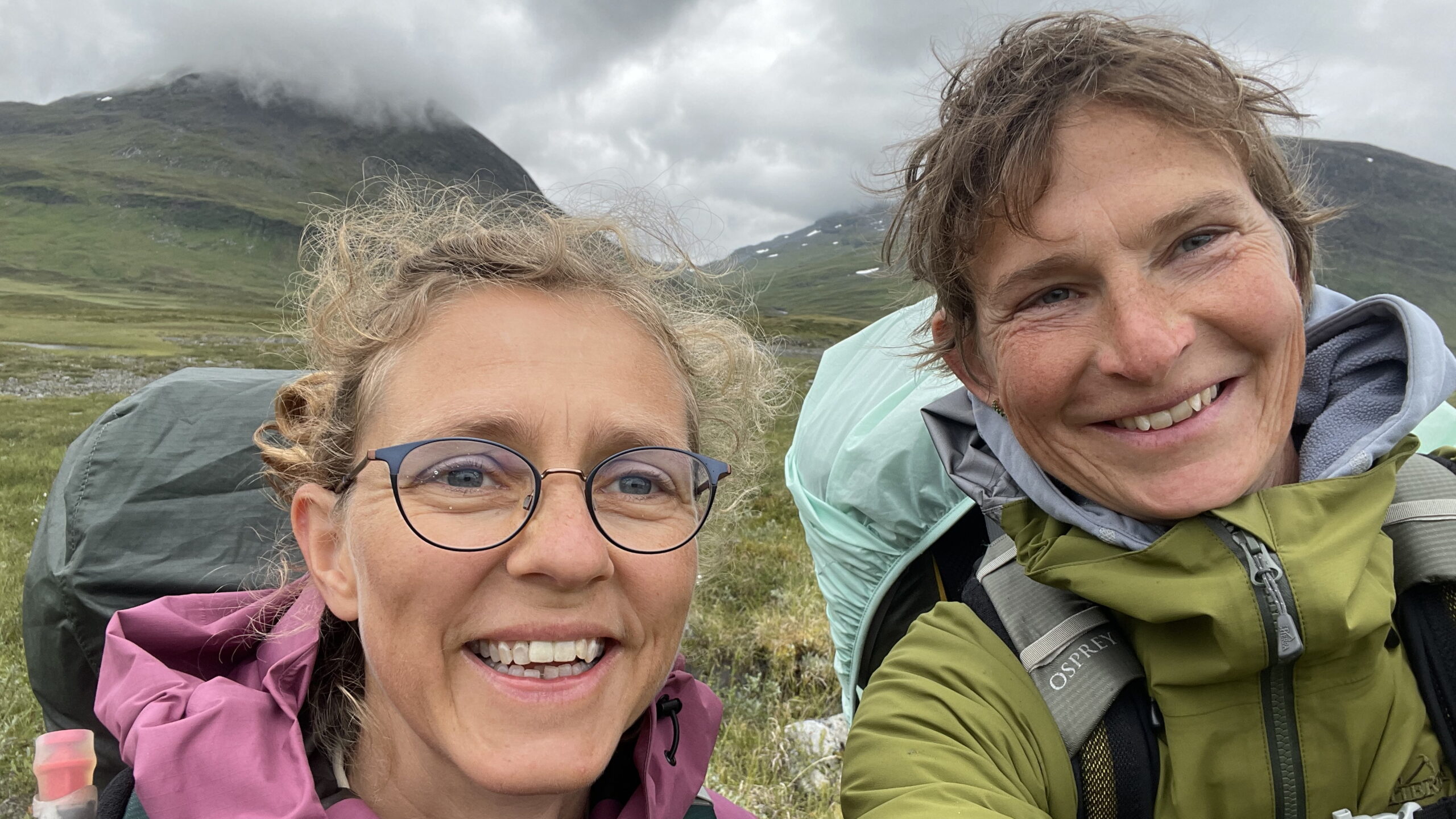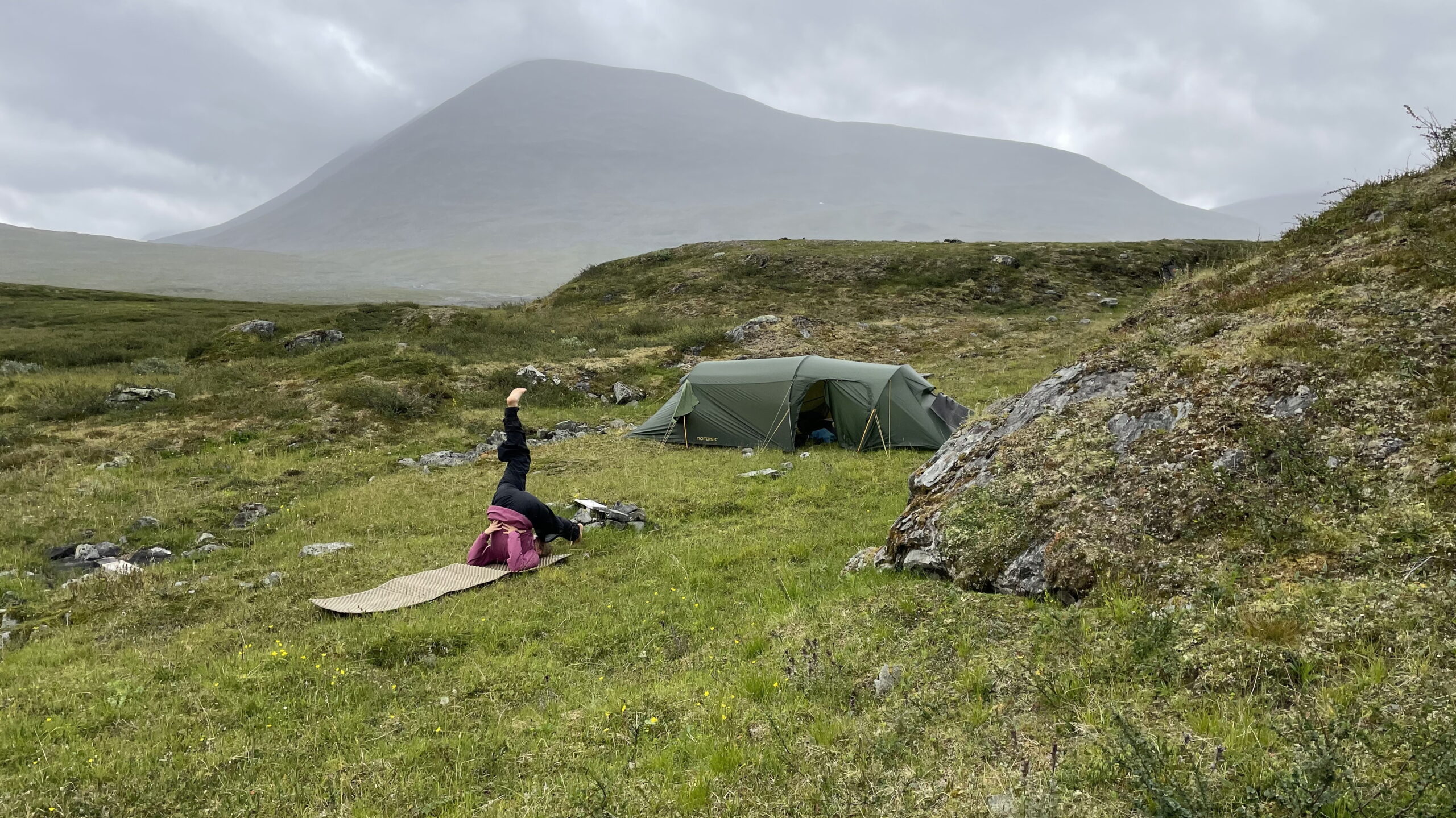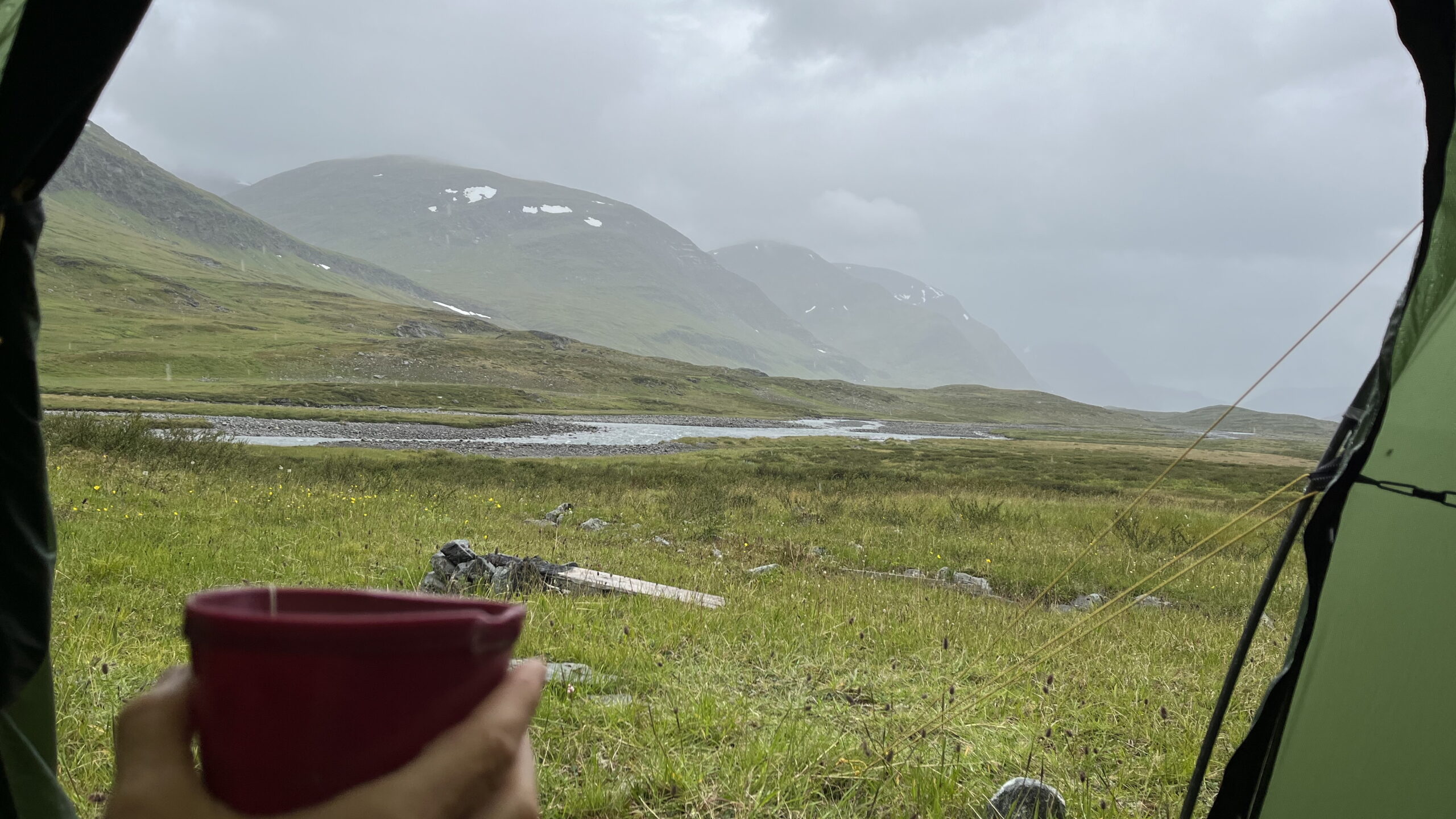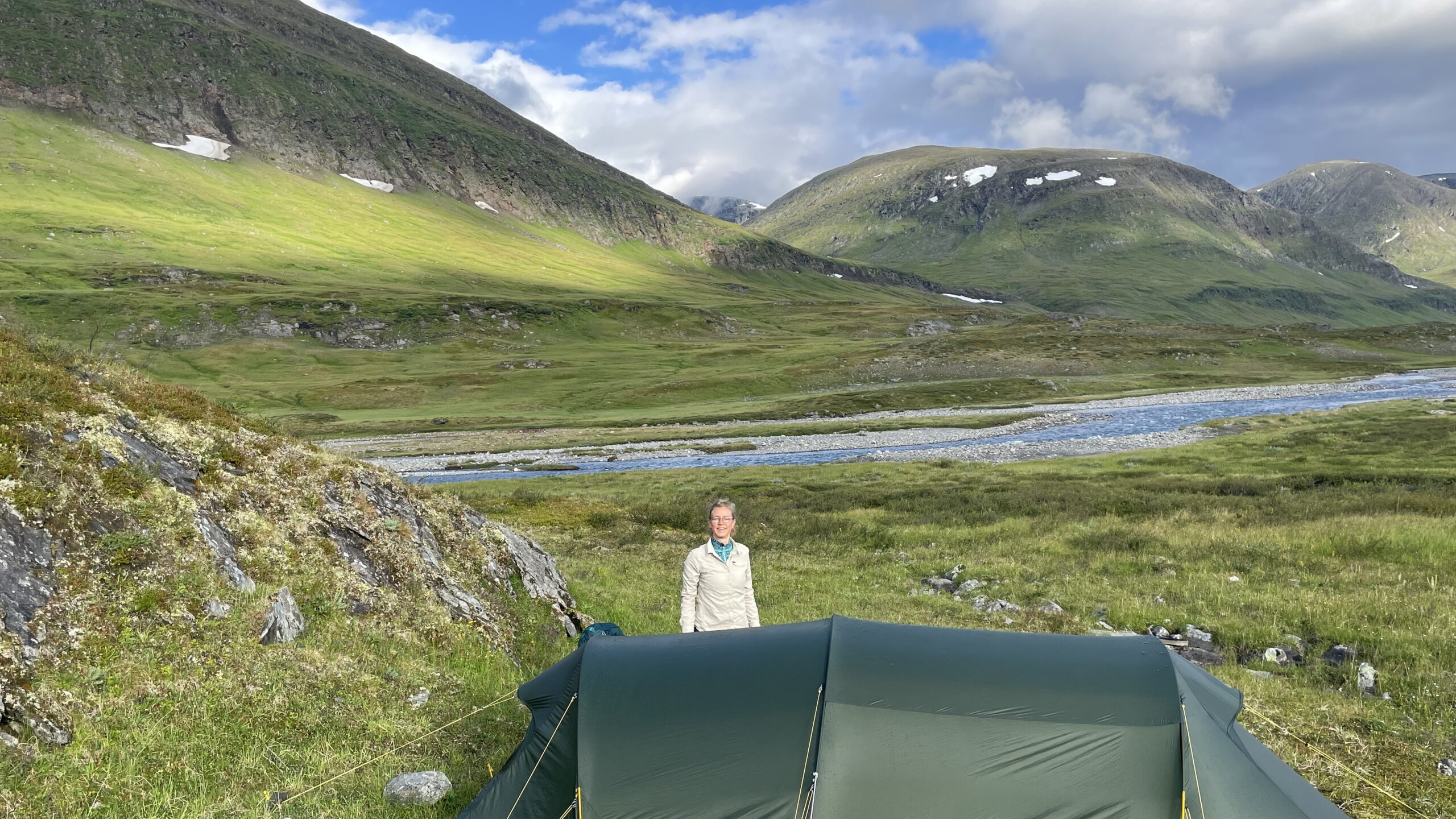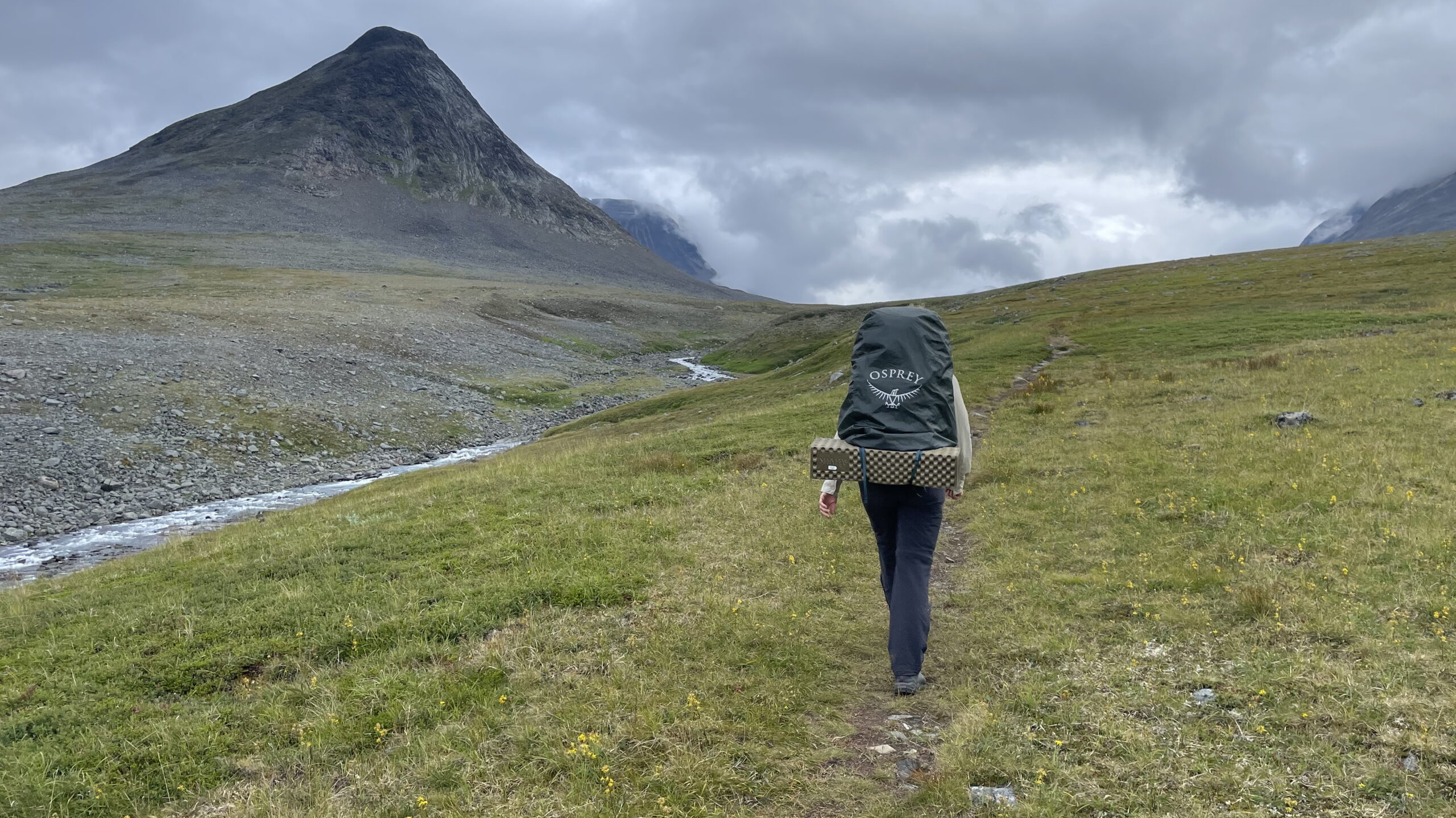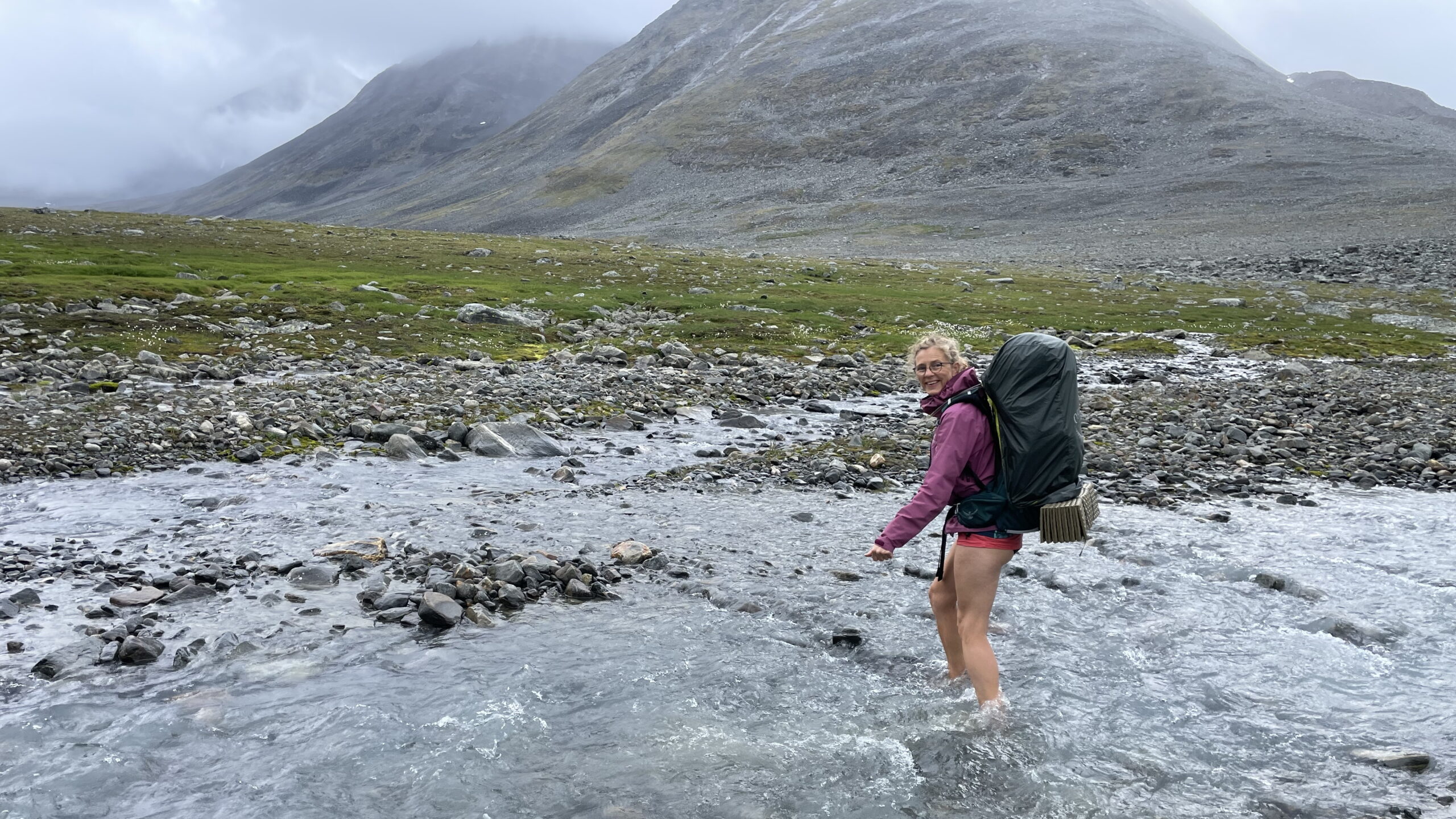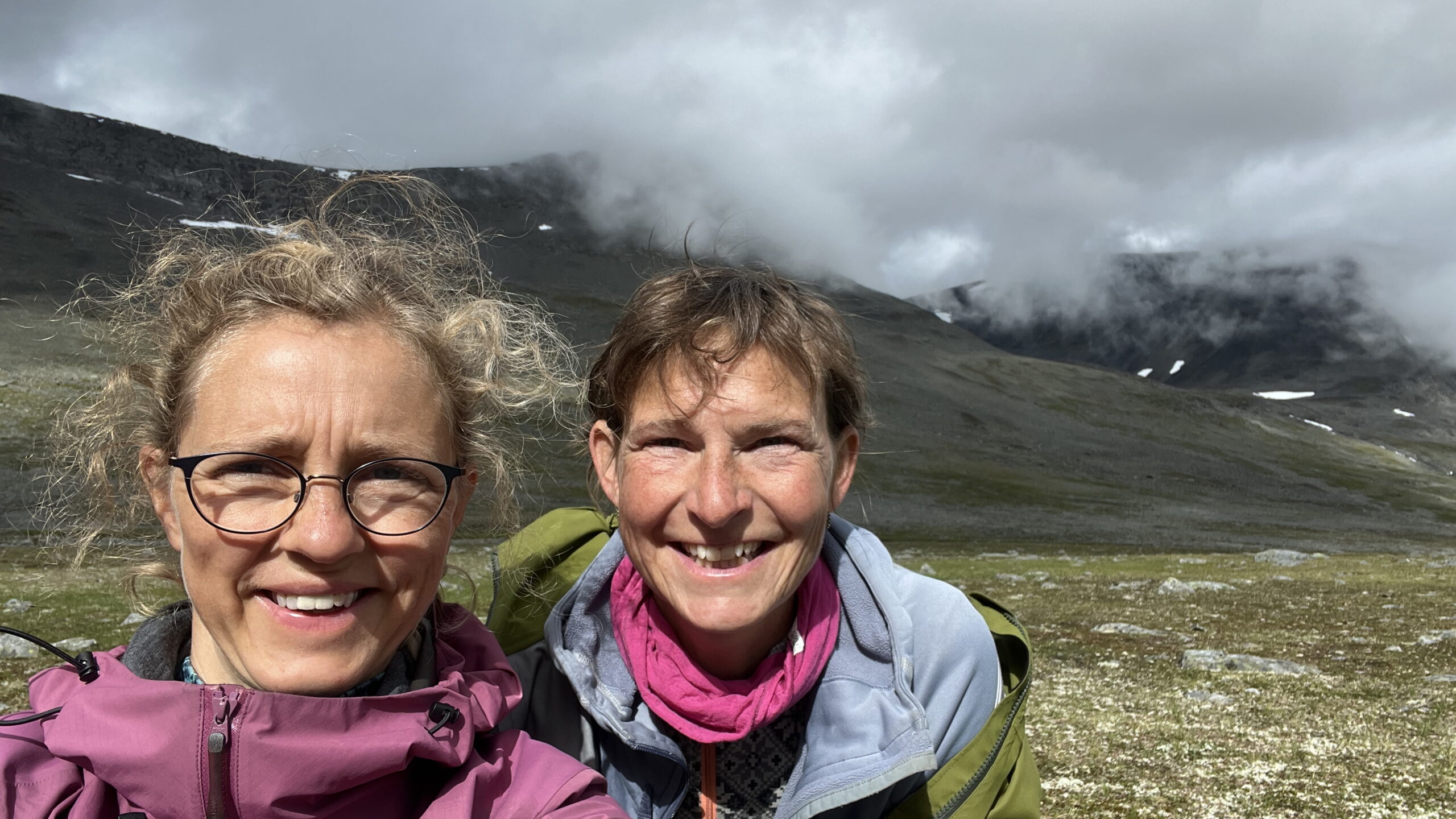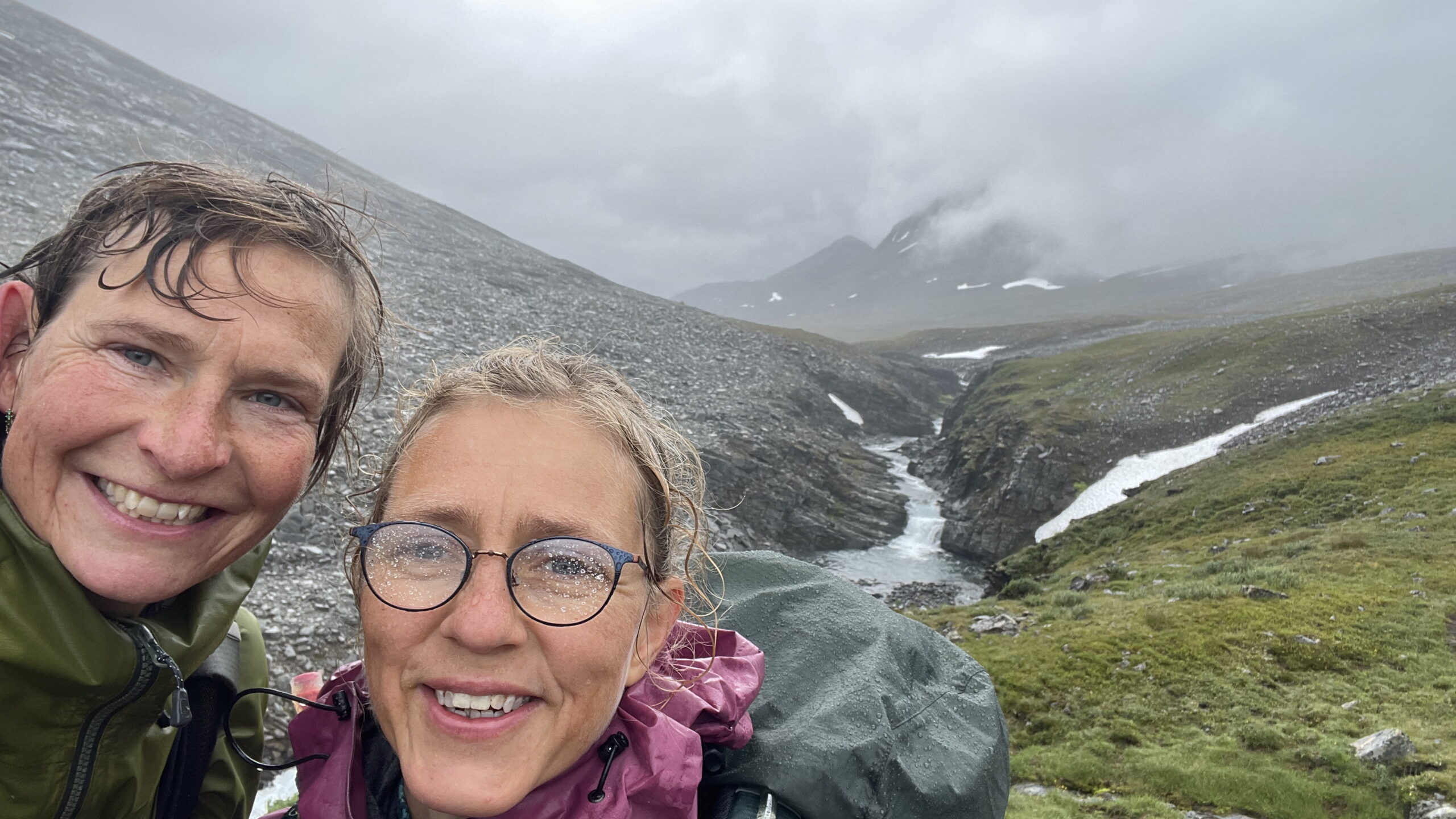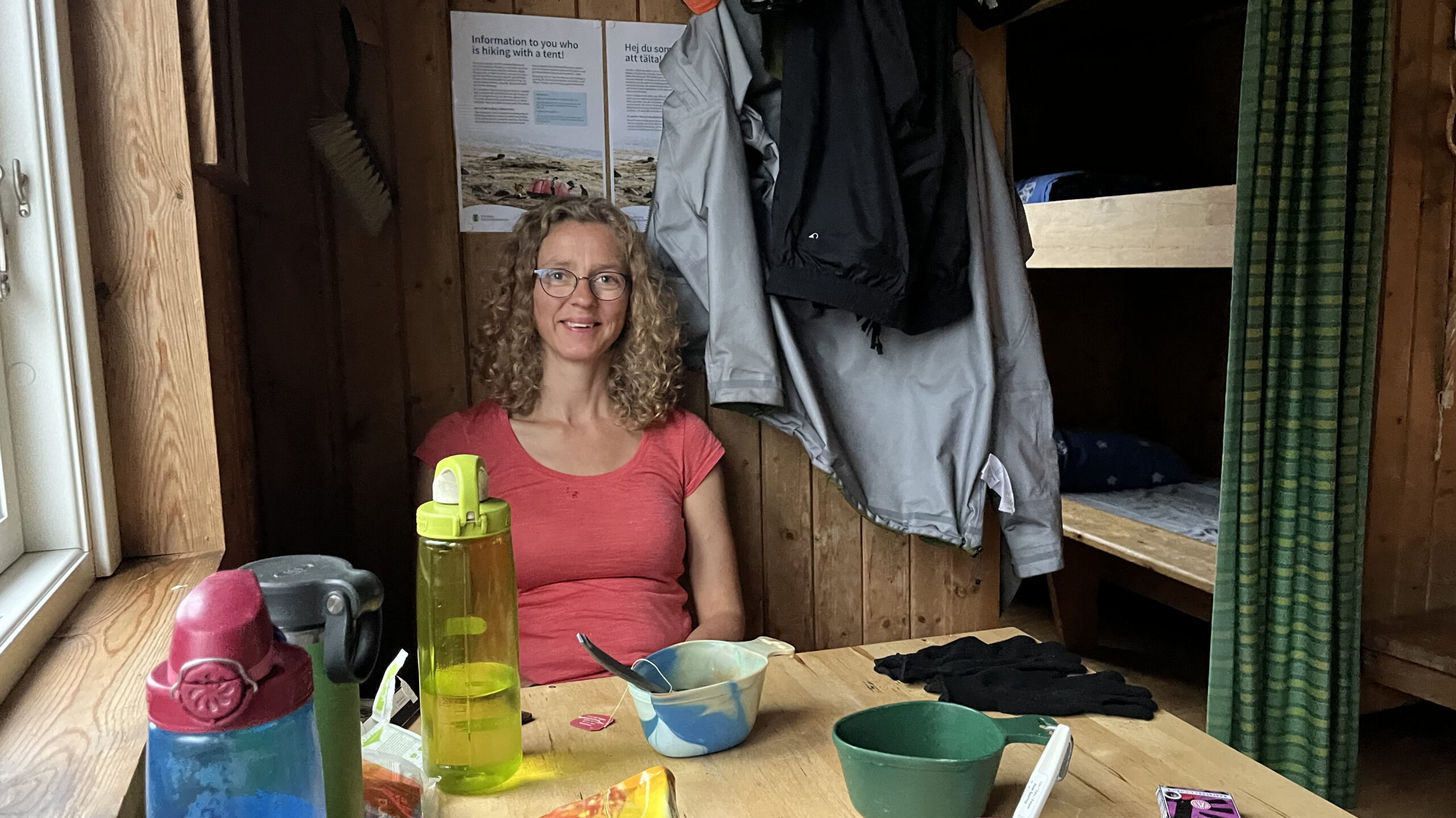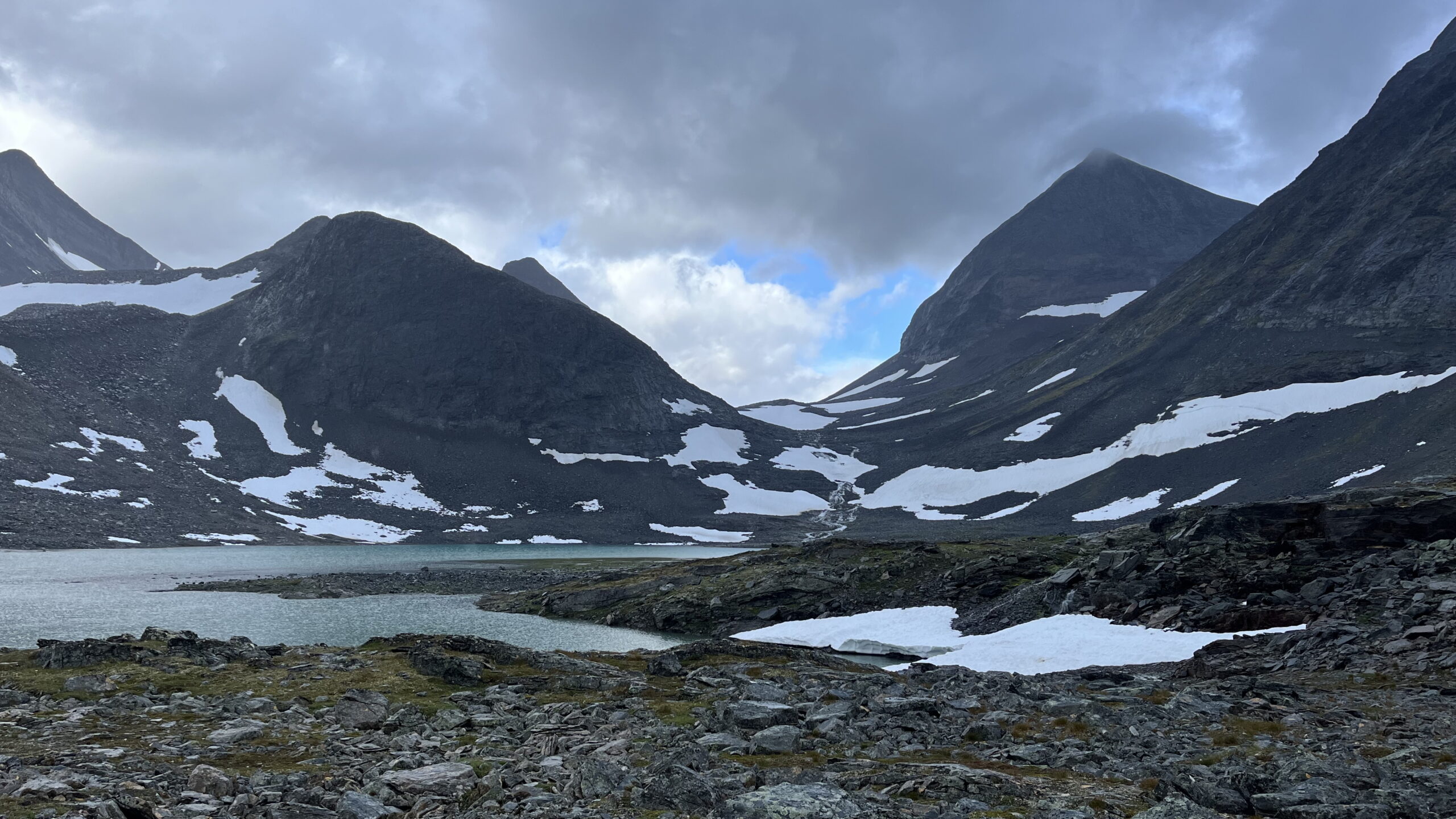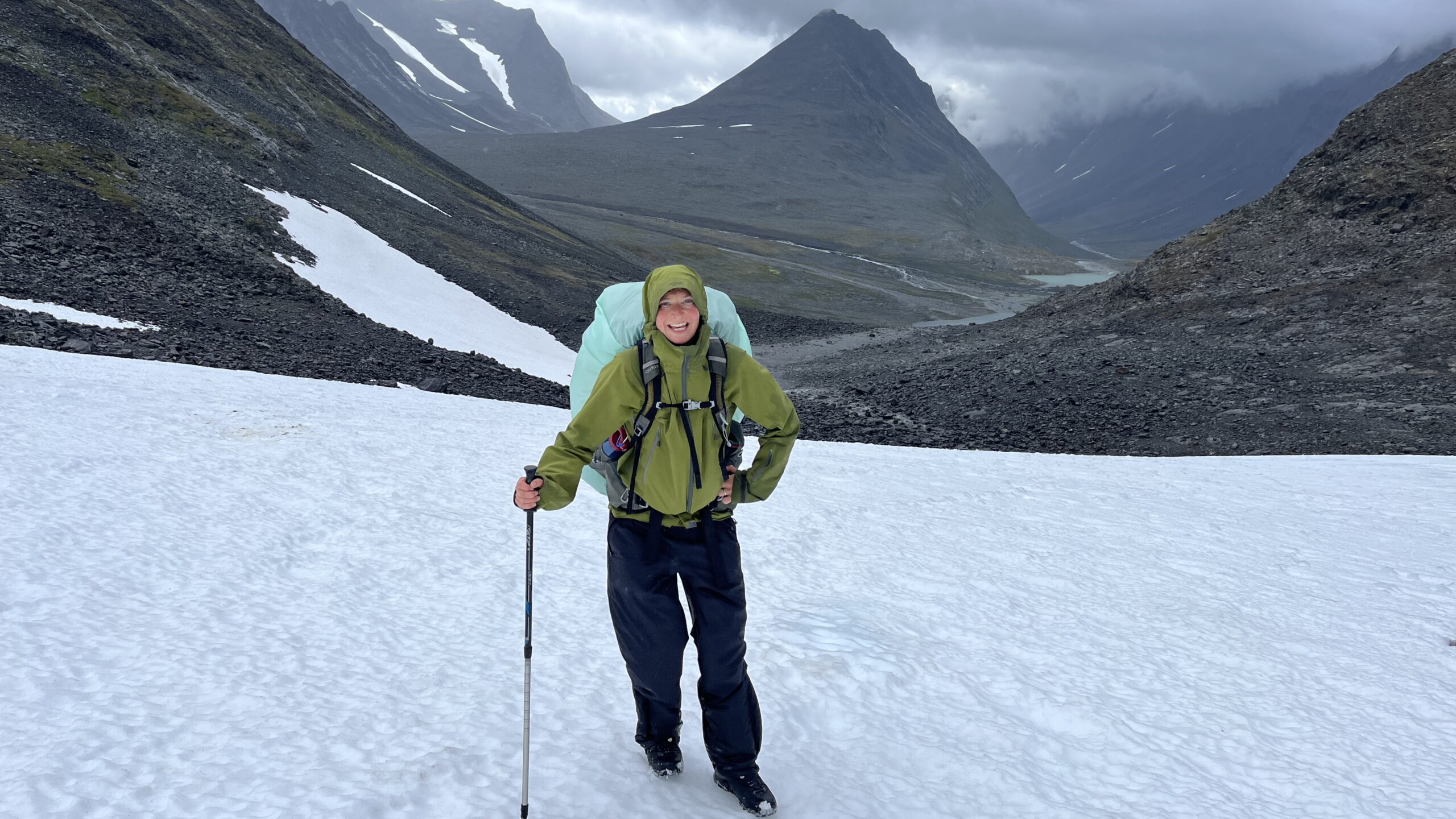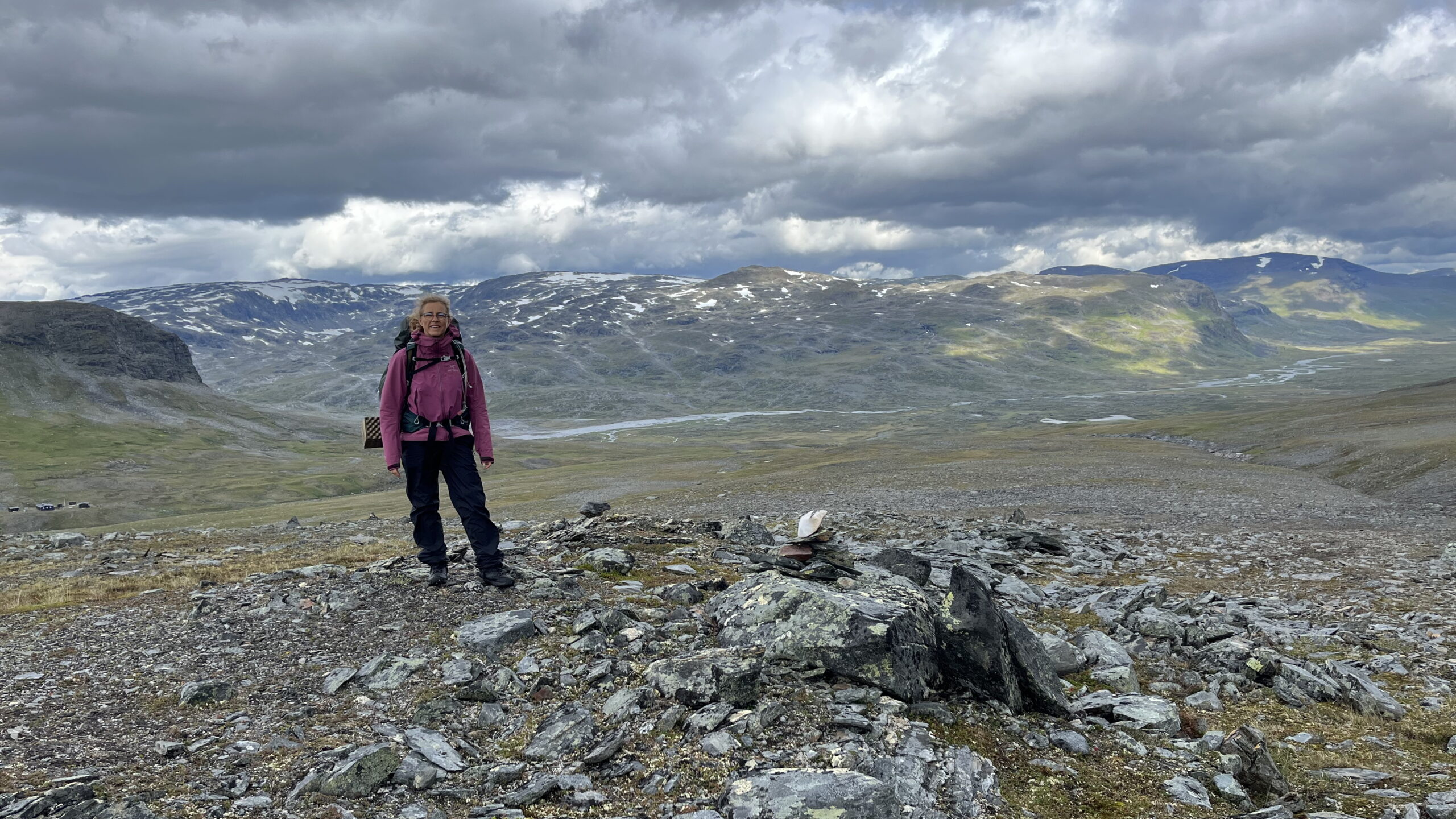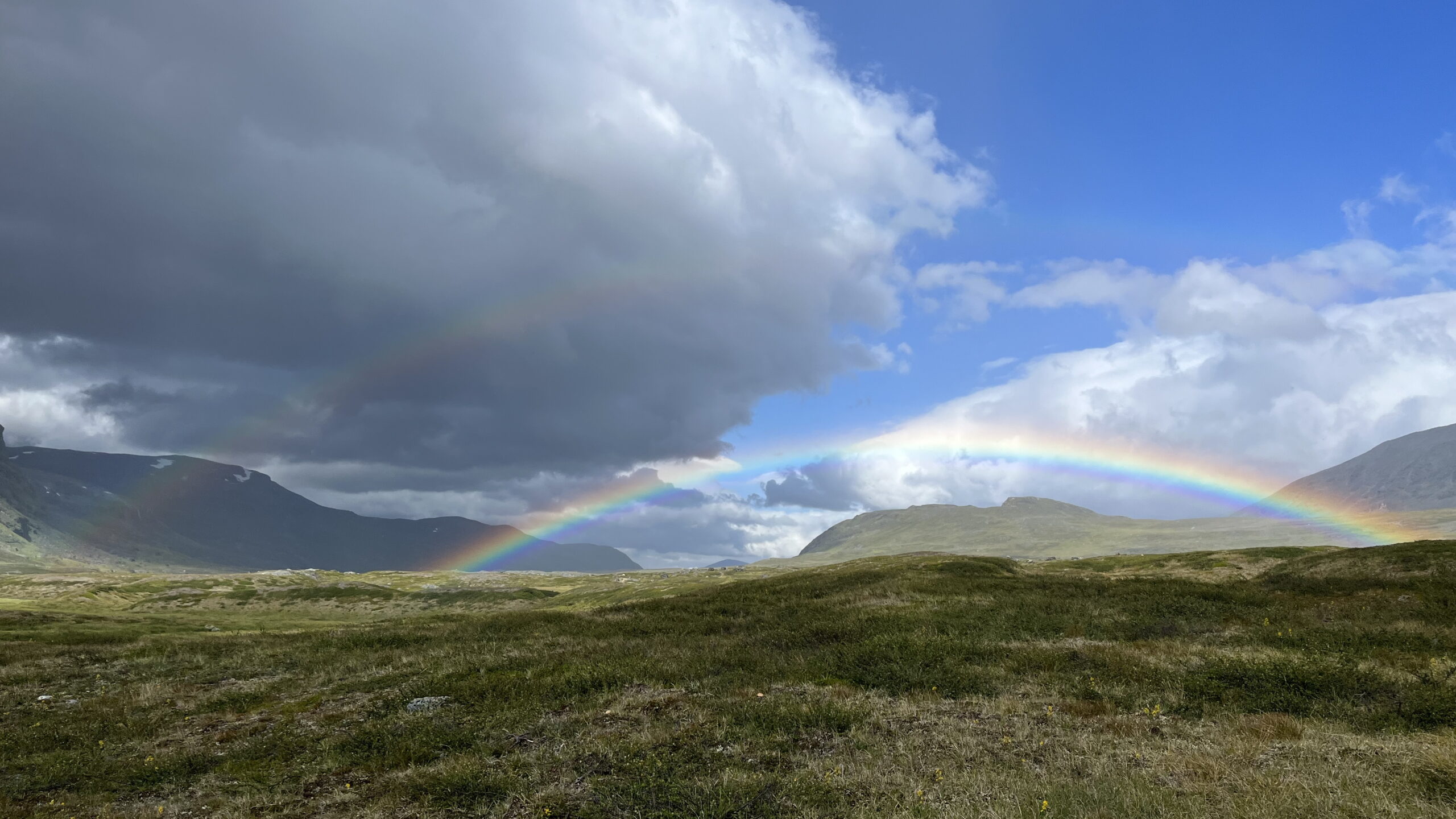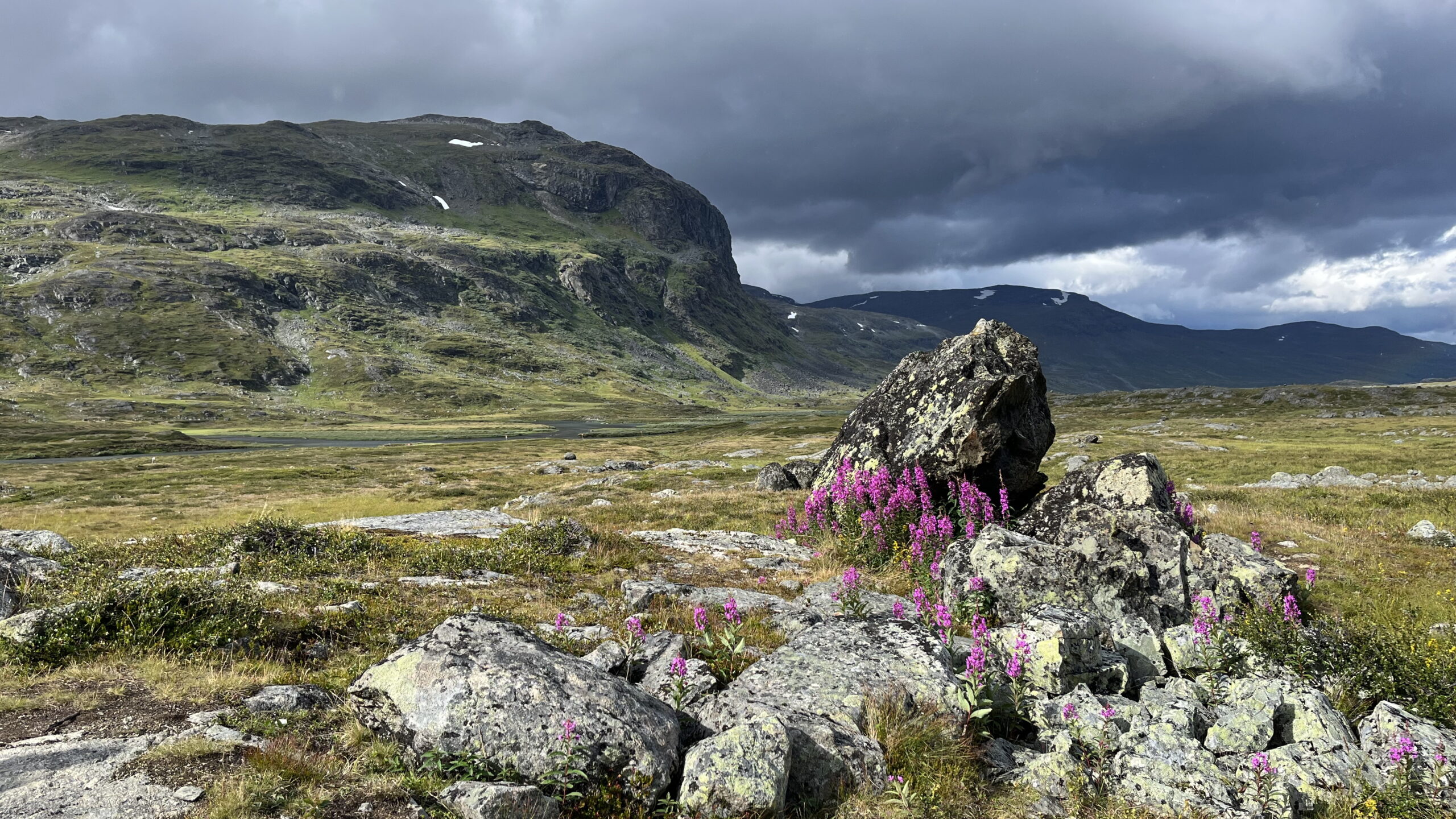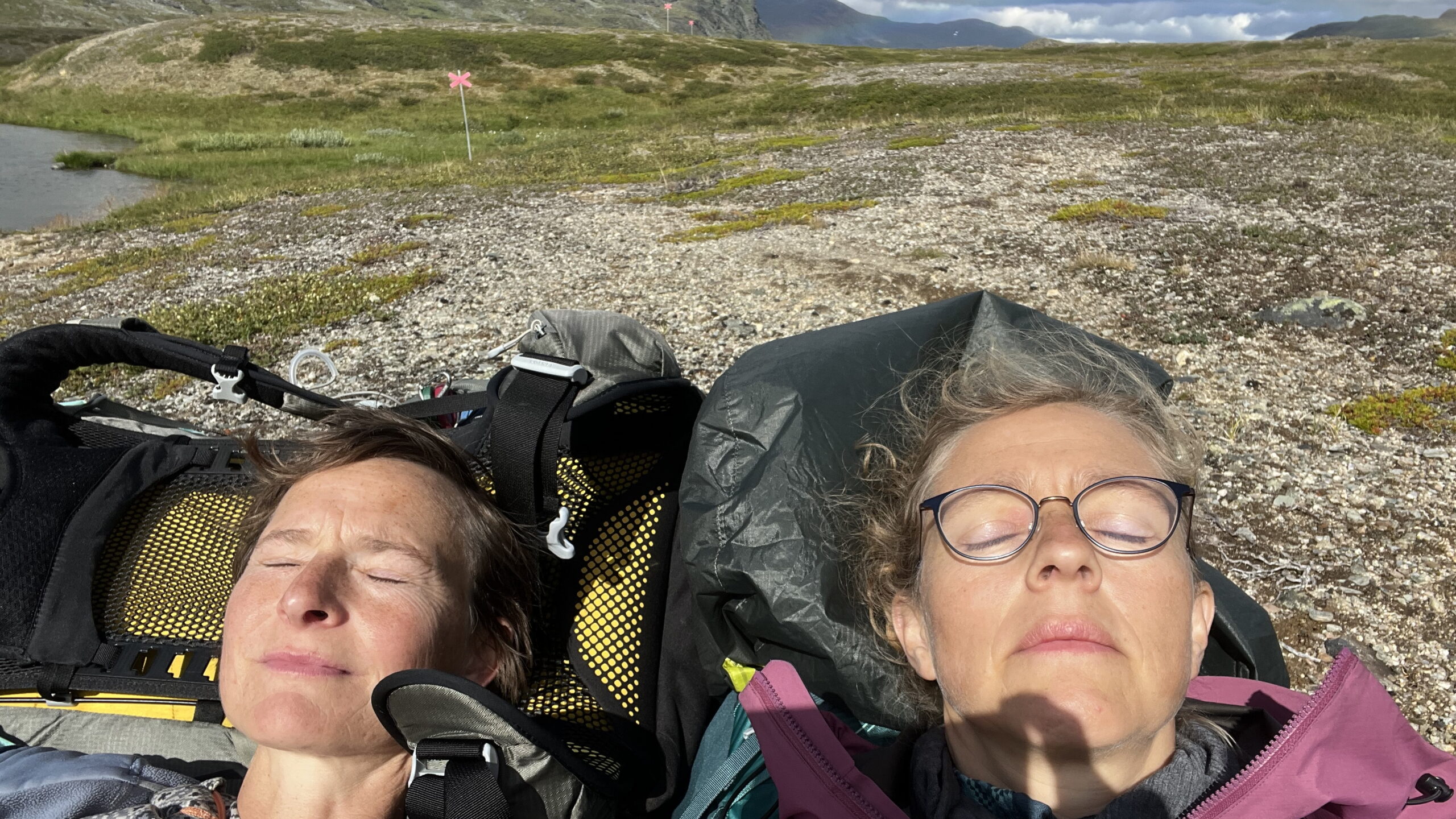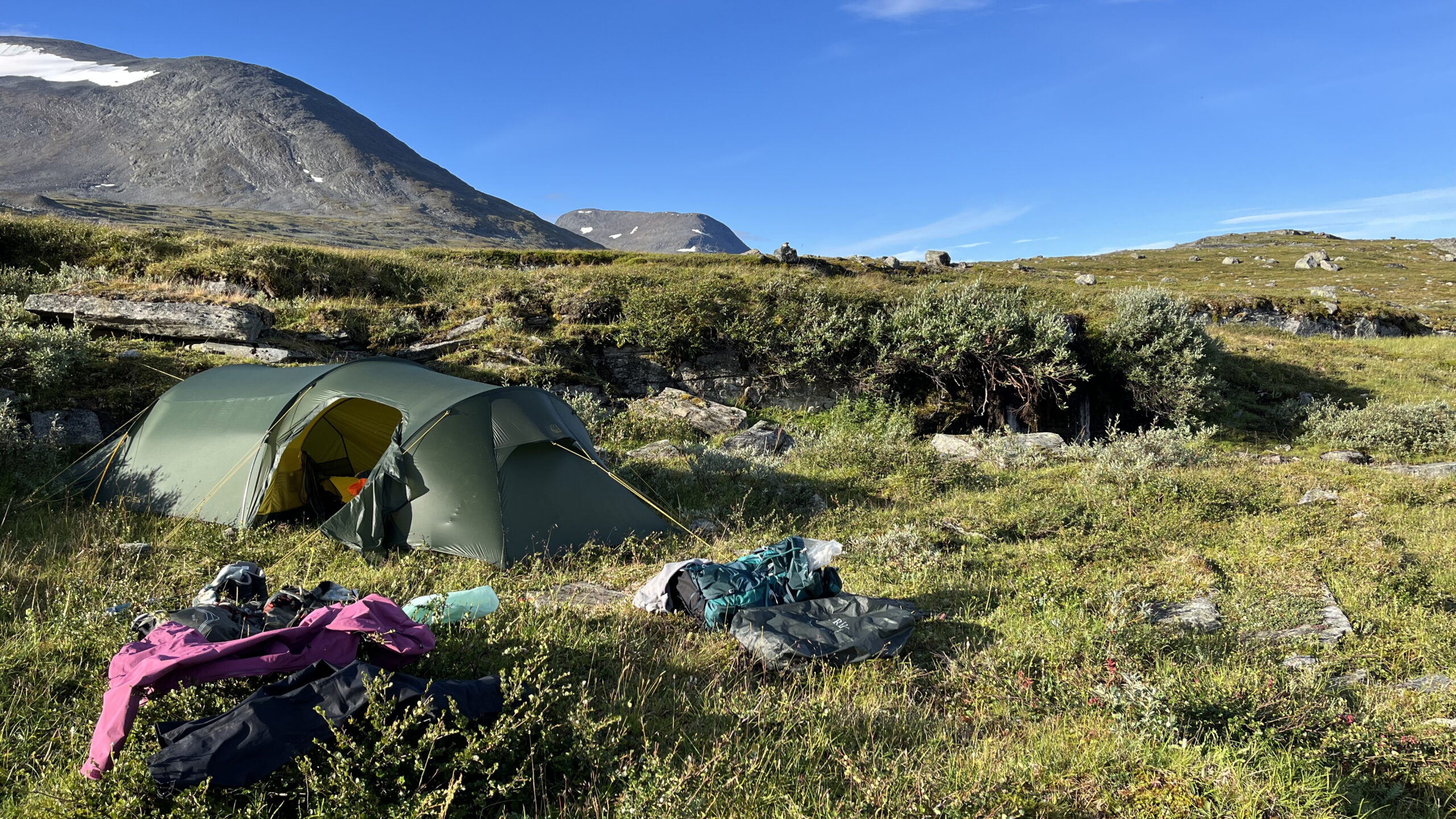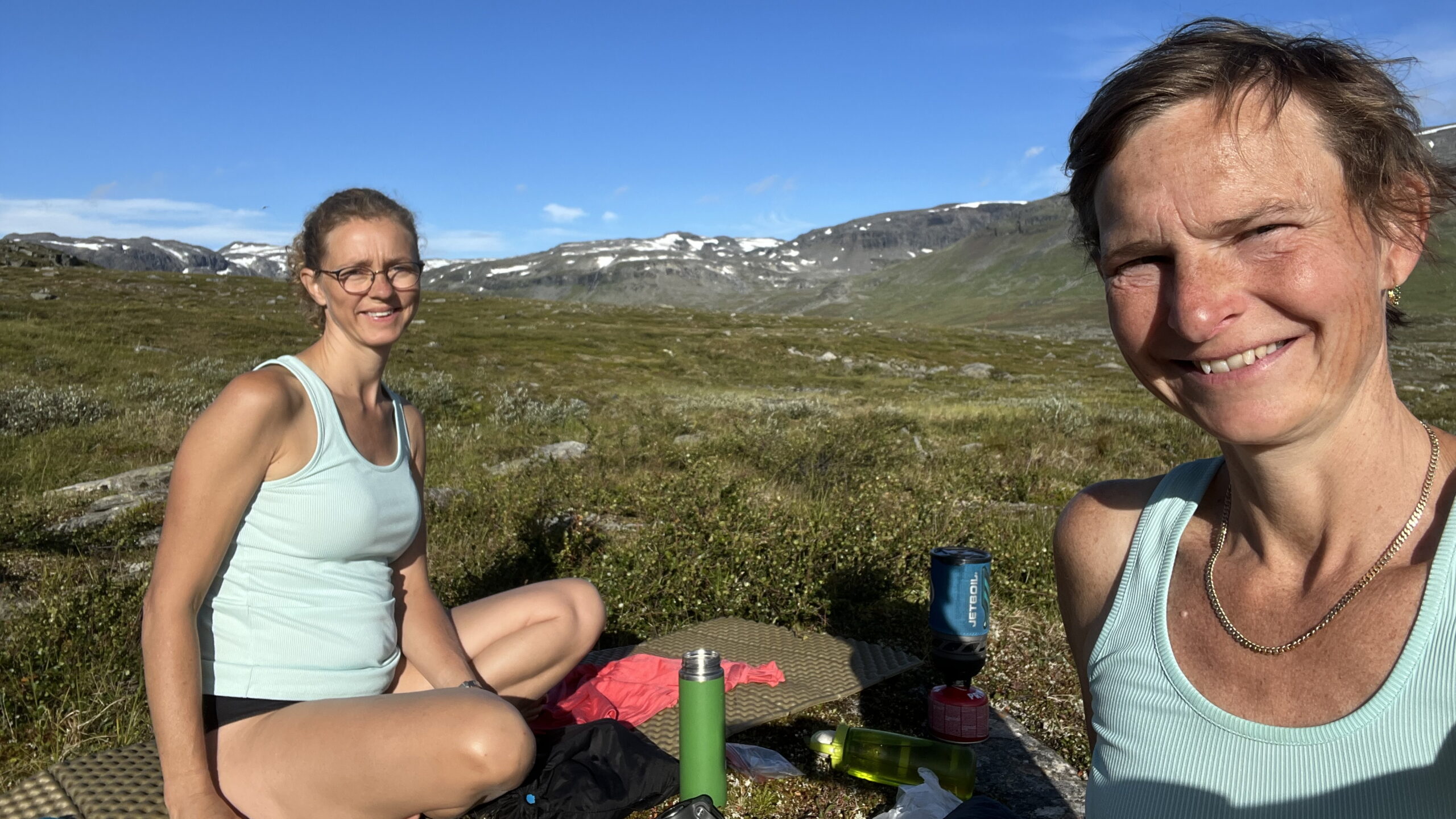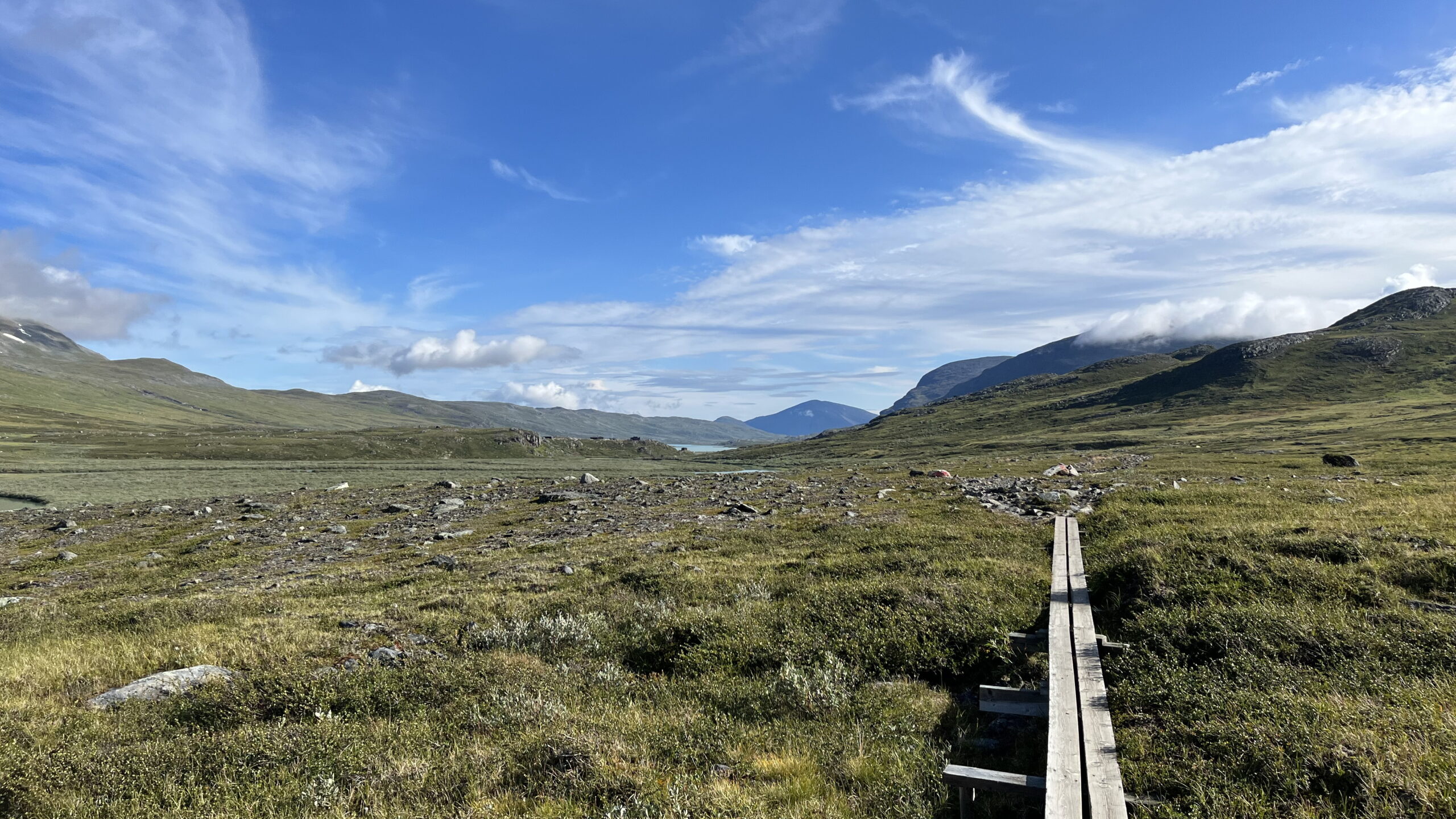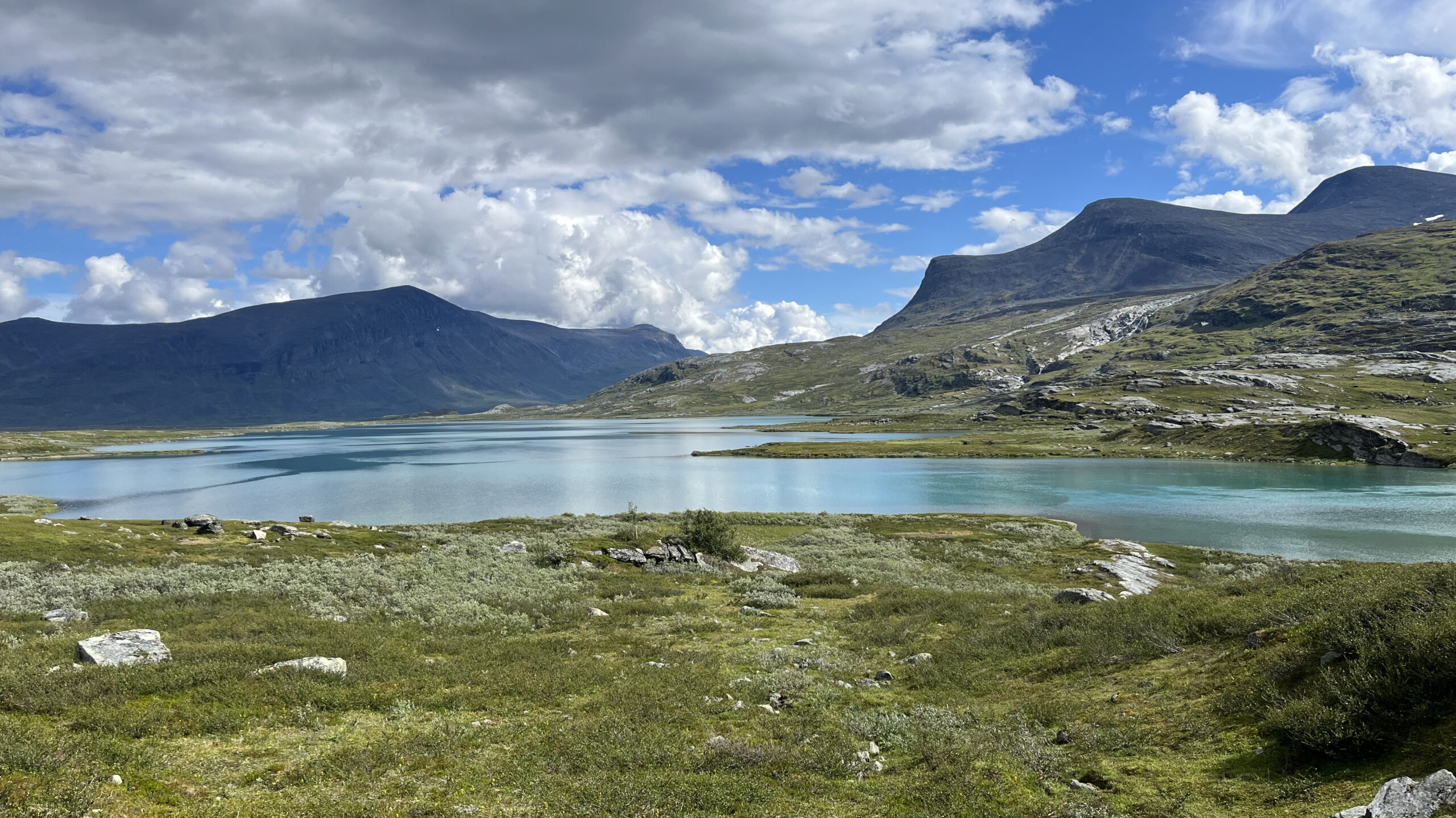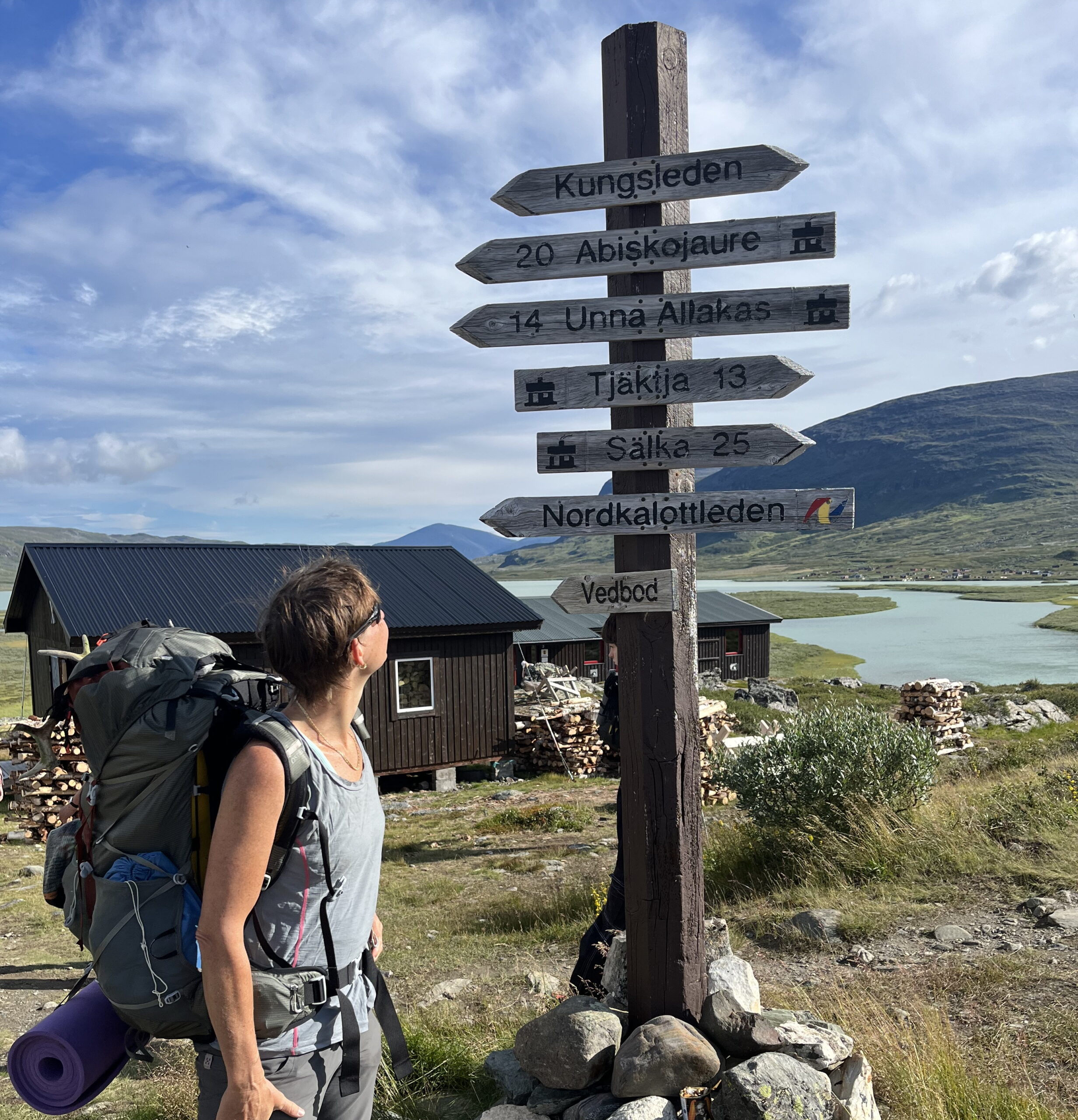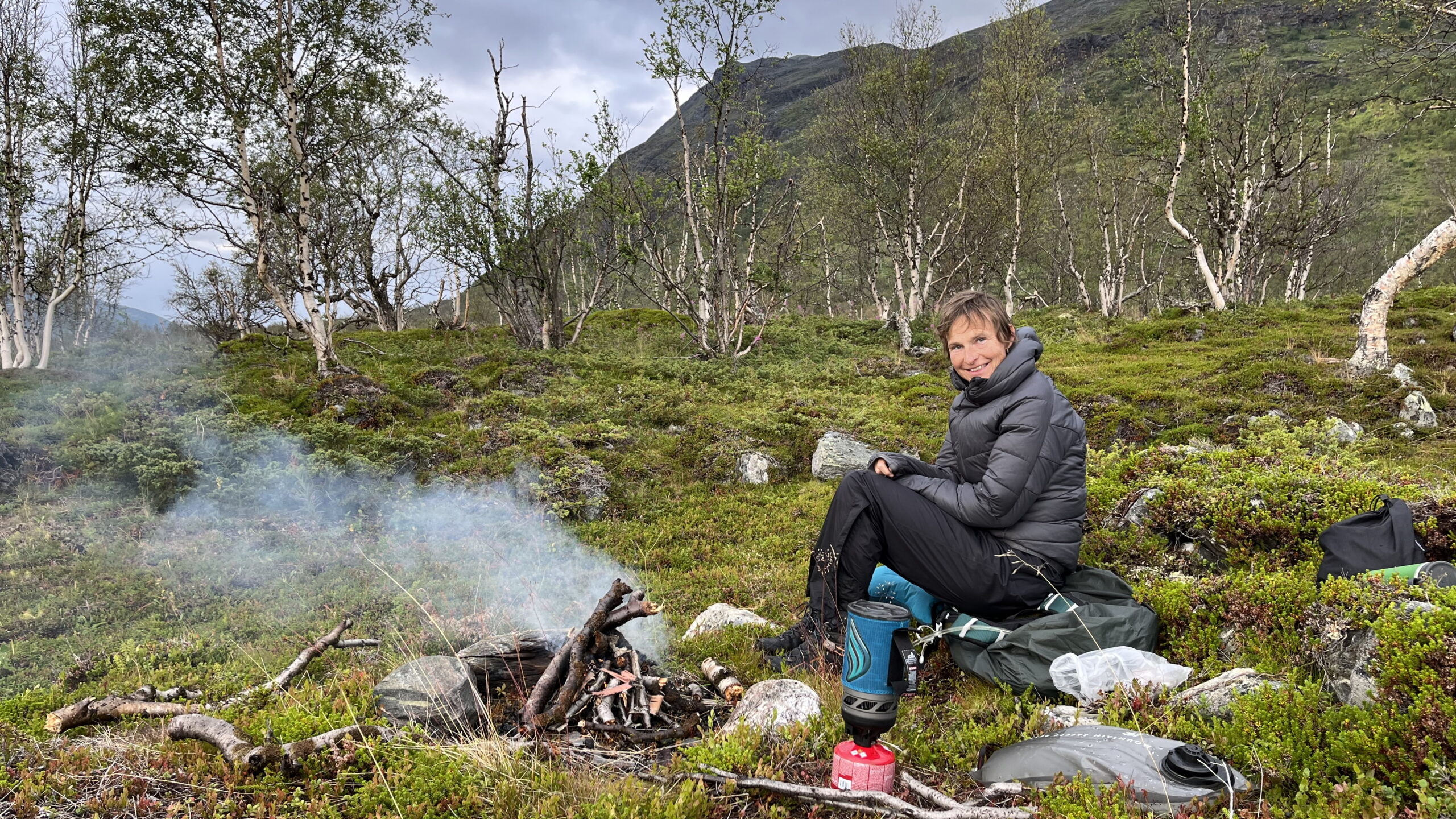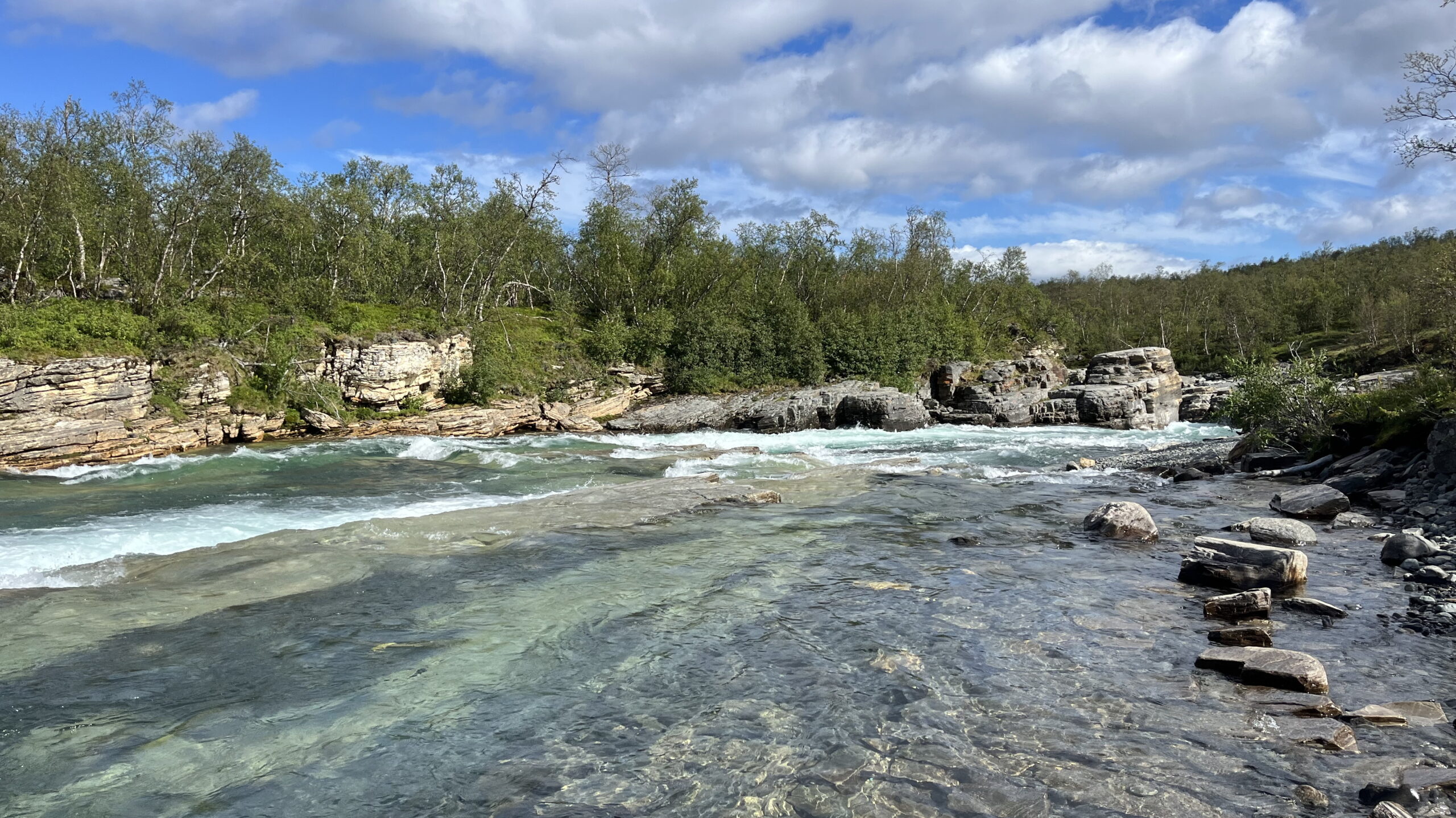Helle hiked the northern part of the Swedish long-distance trail Kungsleden together with a friend in the summer of 2023. The hike started at Kebnekaise Fjällstation and ended in Abisko, a total of 110 km in 6 days. We brought all food and wildcamped far away from the huts.
The Adventure Begins
Traveling to remote destinations can take an awfully long time. With only one week to hike Kungsleden, I had to make some strategic choices to fit in everything I wanted to experience, including the ascent to Kebnekaise, Sweden’s highest mountain. My solution? Taking a helicopter from Nikkaluokta to Kebnekaise Fjällstation—not a bad way to start an adventure!
Before I joined my friend at Kebnekaise Fjällstation, I spent a night at Nikkaluokta Sarri in a cozy 4-person cabin. Though tempted to start hiking immediately in the near-perpetual daylight, I decided to rest properly for the challenging climb ahead.
Day 1: Kebnekaise (18 km)
Our first day was ambitious—hiking Kebnekaise via the western route, covering 18 km with 1800 meters of elevation gain. The guidebooks suggest 10-12 hours, but despite our late start (thanks to my helicopter arrival), we completed it in just 9 hours.
Unfortunately, the summit was shrouded in clouds, robbing us of the panoramic views at the top. However, both the ascent and descent offered breathtaking vistas of the surrounding mountain landscape.
Day 2: Kebnekaise Fjällstation to Sälkastuga (23 km)
The weather forecast promised rain, and it certainly delivered! We were thoroughly drenched as we made our way along the trail. But as they say, there’s no bad weather, only bad clothing—and we were well prepared.
We slept in a tent, carefully drying it each morning with a towel to prevent carrying unnecessary water weight. Our backpacks weighed approximately 12-14 kg including water and food for the entire journey.
Day 3: Sälkastugan to Nallostugan (15 km)
In the Summer of 2023, there was a huge breakout of diarrhea, and several hikers had to be taken out by helicopter, so we wanted to avoid the crowds to not risk our health. With forecasts of heavy rain and wind gusts up to 18 m/s, we made the wise decision to detour from Kungsleden to the less-visited Nallostugan hut. This proved crucial—later in the evening, hikers who tented had to come inside the hut as the tents couldn’t withstand the fierce wind.
The trail was poorly marked, but navigation was relatively straightforward as we just needed to follow the valley to Nallostugan. The heavy rain forced us to remove our boots when crossing streams, adding a small adventure to our day.
Despite the frigid temperatures, I even managed a quick swim in a lake. Yes, the water was absolutely freezing!
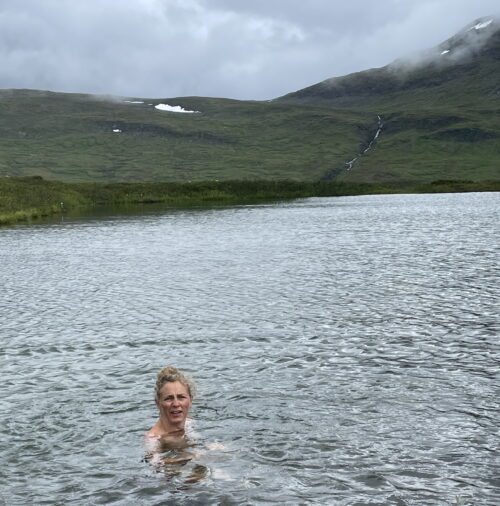
Day 4: Nallostugan to Alesjaurestugan (21 km)
The rain persisted, but with wind speeds “only” at 14 m/s, we bid farewell to our dry, cozy shelter and ventured back into the elements.
There was no marked trail from Nallostugan back to Kungsleden and Tjäktastugan, but armed with a map, compass, and plenty of experience, we navigated confidently across rocks and snow patches. We stopped for lunch at Tjäktastugan before continuing our journey.
By afternoon, the clouds briefly parted, giving us a precious glimpse of sunshine before the rain resumed its steady patter.
Day 5: Alesjaure to Abiskojaure (17 km)
What a delightful change! We woke at 7 AM in a sun-baked tent—finally, clear skies! Breakfast in the sunshine with no wind felt like pure luxury after the previous days’ weather.
I enjoyed a refreshing “shower” in a nearby stream before packing up our now-dry tent. The day was filled with swimming breaks and even a midday nap in the sun. Though rain returned briefly in the afternoon, the evening compensated with a campfire and freshly picked blueberries from our campsite.
We made a point of camping 2-3 km away from the cabins, giving us solitude and space to fully connect with nature.
Day 6: Abiskojaure to Abisko (15 km)
Our final hiking day was the only one completely free of rain! We descended through beautiful birch forests along lakes and rivers. The path was dotted with small huts, and I seized another opportunity to swim in the crystal-clear lake waters.
We reached Abisko three hours before our scheduled train, finally regaining mobile phone signal and catching up with family at home. But then came the transportation hiccup—our train was delayed by three hours, then five! After another freeze-dried meal instead of the sauna and proper dinner we’d anticipated in Kiruna, our patience wore thin.
The solution? Hitchhiking! Within just five minutes, two Swedish brothers who had been fishing picked us up. During the drive, they shared fascinating stories about Kiruna’s mining industry and how parts of the town are being relocated due to mining activities.
We finally arrived in Kiruna at 9:30 PM, with just enough time for a quick sauna followed by well-deserved drinks at the hotel bar.
Reflections
I could have continued hiking for much longer. There’s something about being in nature that brings me complete inner peace—I enjoyed every step of the journey and treasured the time spent with my friend. I’m deeply grateful to my friend for inviting me on this adventure, and to my husband Peter and our boys for supporting me in spending precious holiday time away from them.

For anyone contemplating this trek—do it! Just be prepared for changeable weather, bring proper gear, and embrace the stunning wilderness of northern Sweden. Kungsleden truly offers an unforgettable hiking experience through some of Scandinavia’s most beautiful landscapes.
Getting To and From Kungsleden
My journey began with a flight to Kiruna, which required a connection through Stockholm. Once in Kiruna, I needed to reach Nikkaluokta, which serves as the starting point for many Kebnekaise treks. While there are two daily buses that run between Kiruna and Nikkaluokta, their schedules unfortunately don’t align well with typical flight arrivals.
Given this inconvenience, I arranged private transportation through Kiruna Private Guides, which cost approximately 900 DKK. This proved to be a worthwhile investment as it allowed for a seamless transition from the airport to my first accommodation.
From Nikkaluokta, I took a helicopter service operated by Kallax Flyg to reach Kebnekaise Fjällstation. This scenic flight not only saved considerable hiking time but also provided spectacular aerial views of the landscape we would be trekking through.
For our return journey, we had originally planned to take the train from Abisko to Kiruna. However, due to unexpected delays, we ended up hitchhiking back instead, which turned into its own adventure.
Accomondation
For the first night, I stayed at Nikkaluokta Sarri, which served as a comfortable base before beginning the hike.
Throughout the main portion of our hike, we opted for tent camping. We deliberately chose to set up our tents away from the established cabins along the route to enjoy greater privacy and a more immersive wilderness experience. We spent one night at Nallostugan due to dangerous weather conditions.
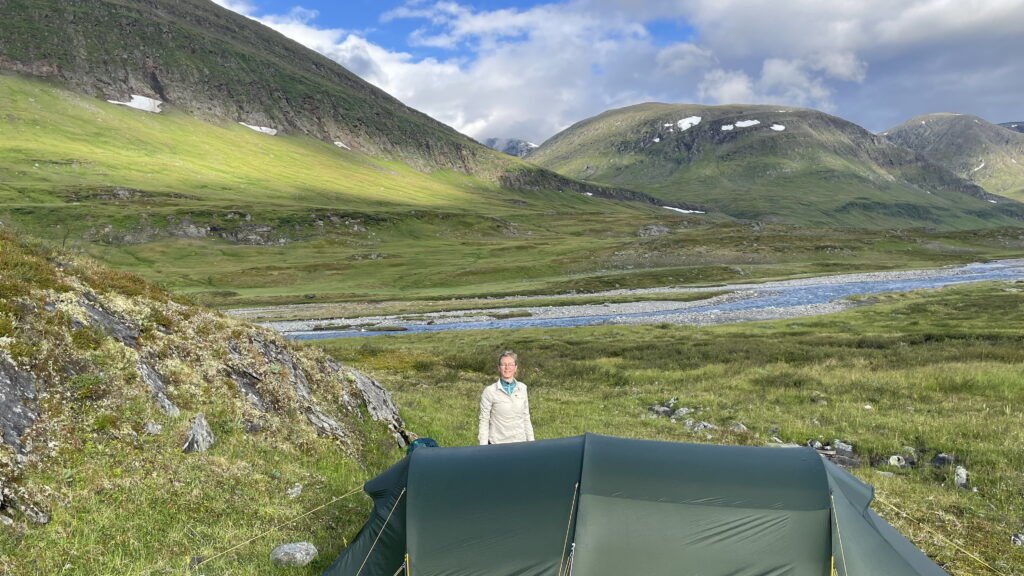
On our final night before departure, we treated ourselves to the comfort of the Best Western Hotel Arctic Eden in Kiruna, which was a welcome luxury after days of camping in the Scandinavian wilderness.
For other hikes in Sweden see here
